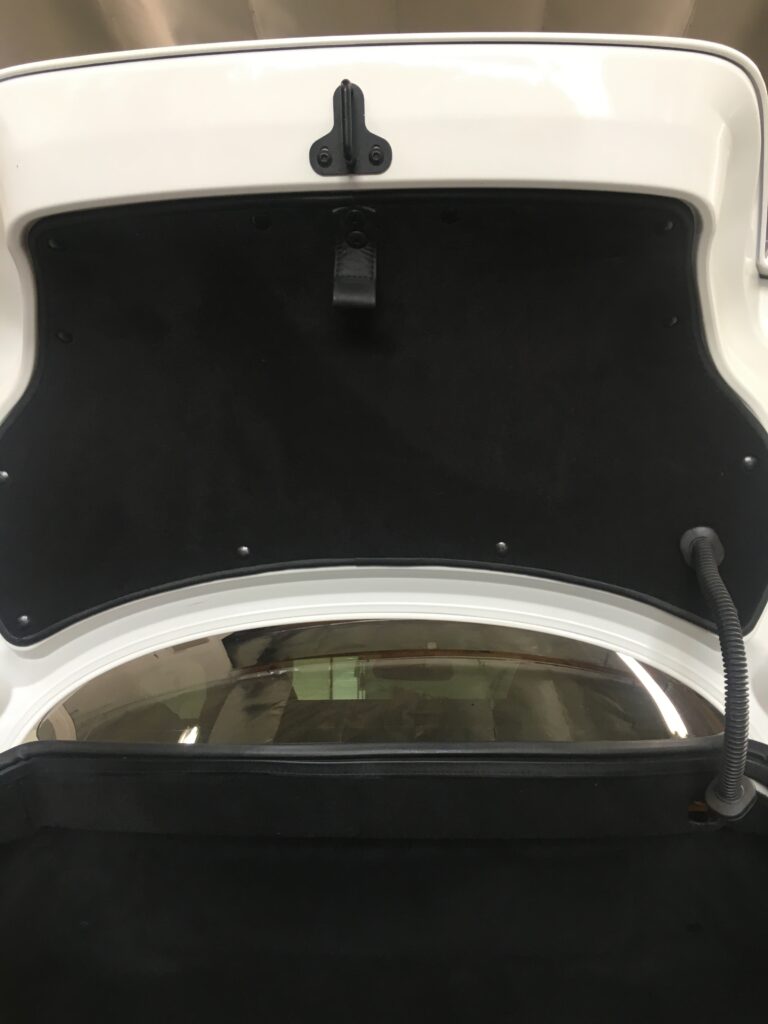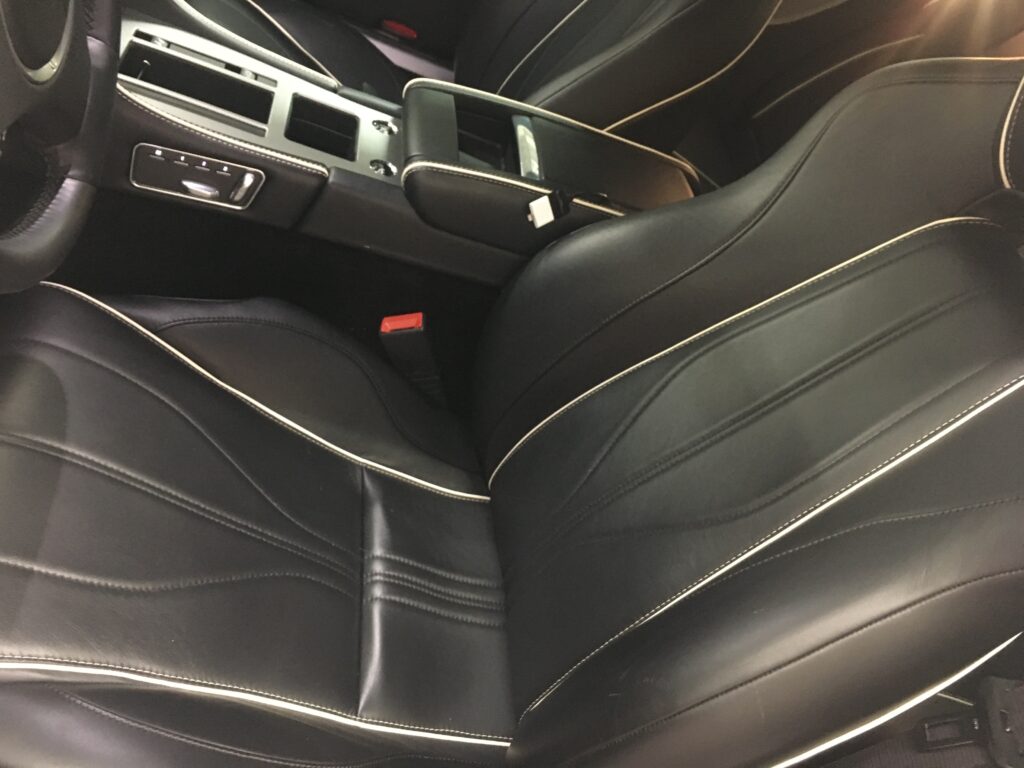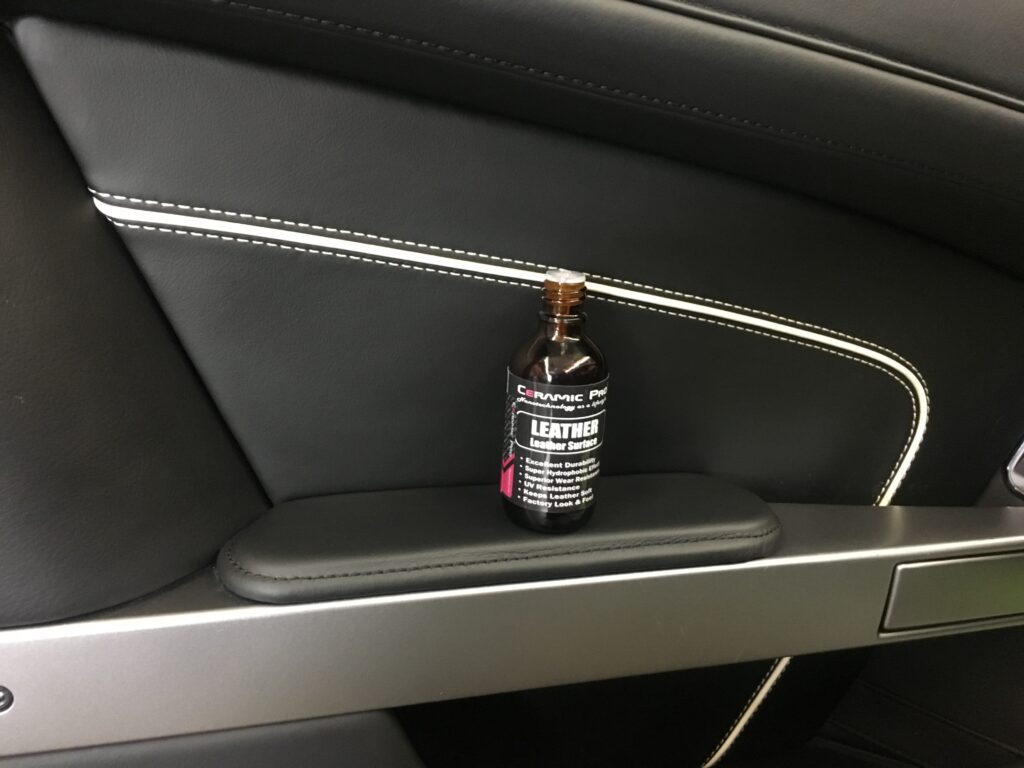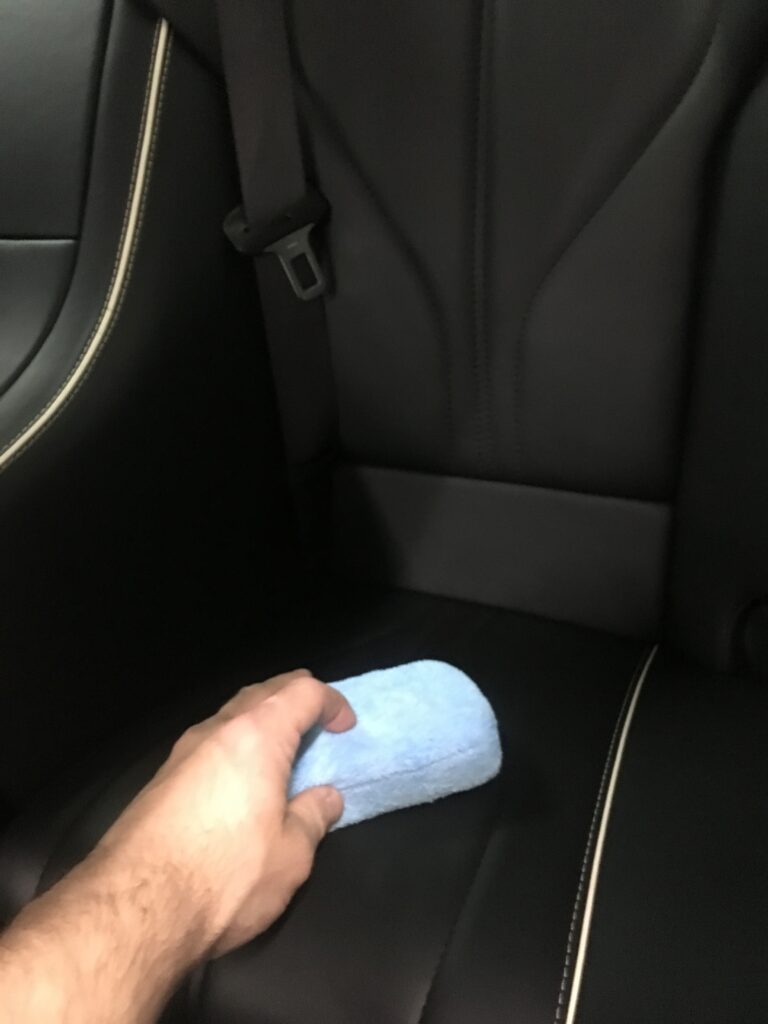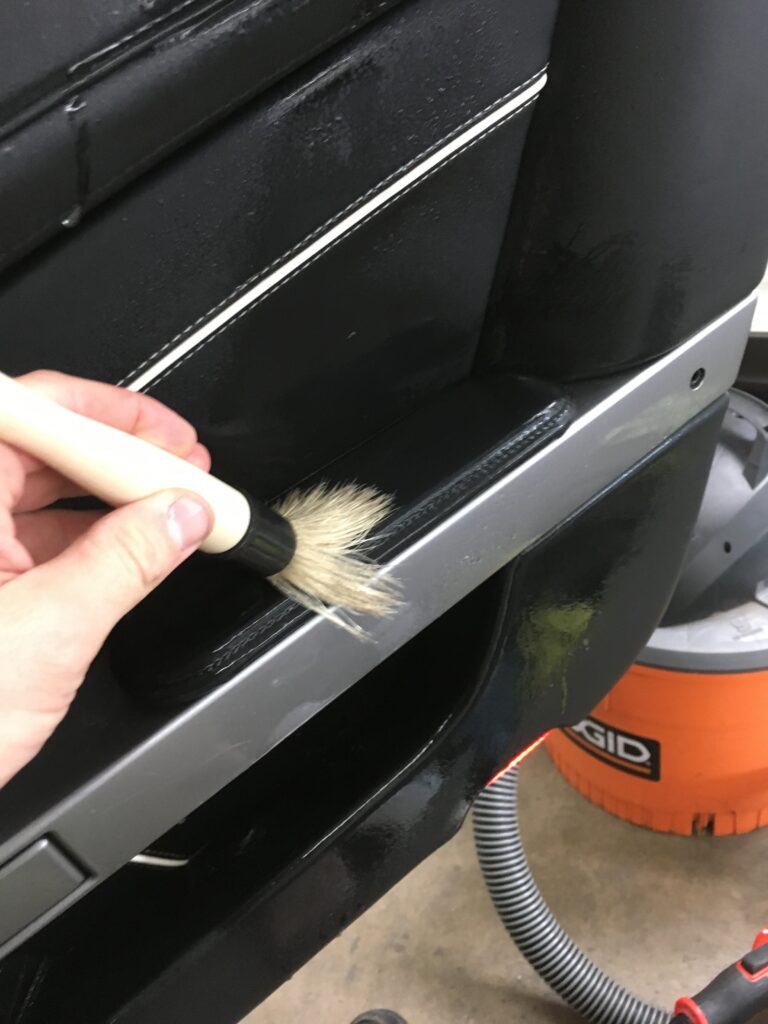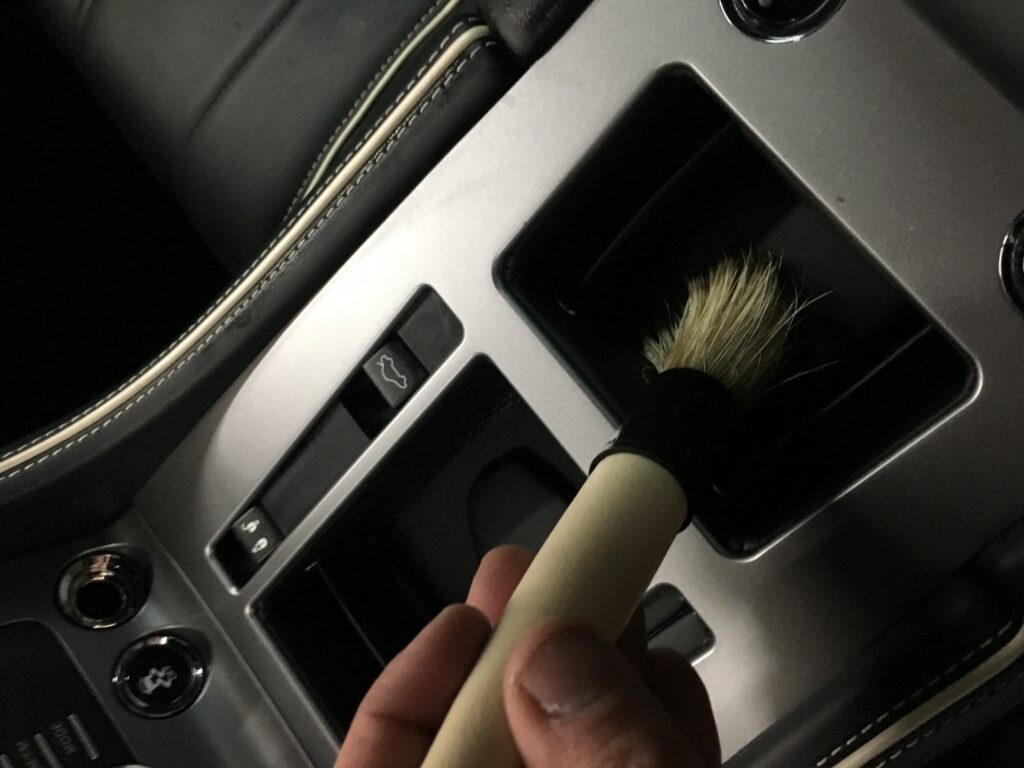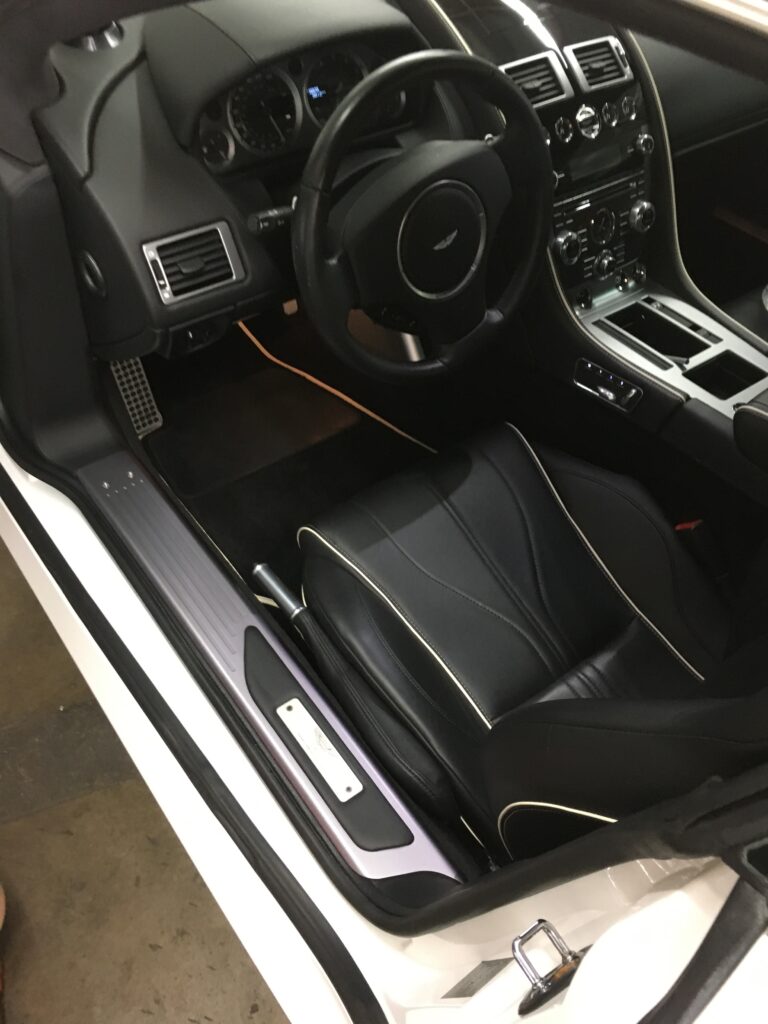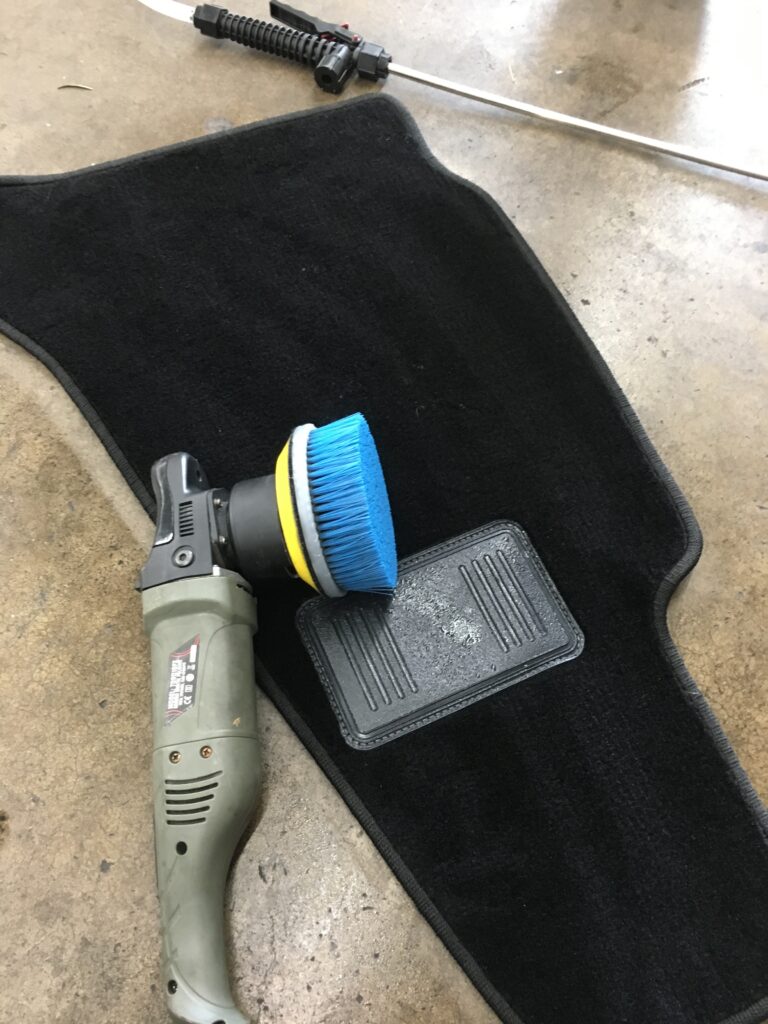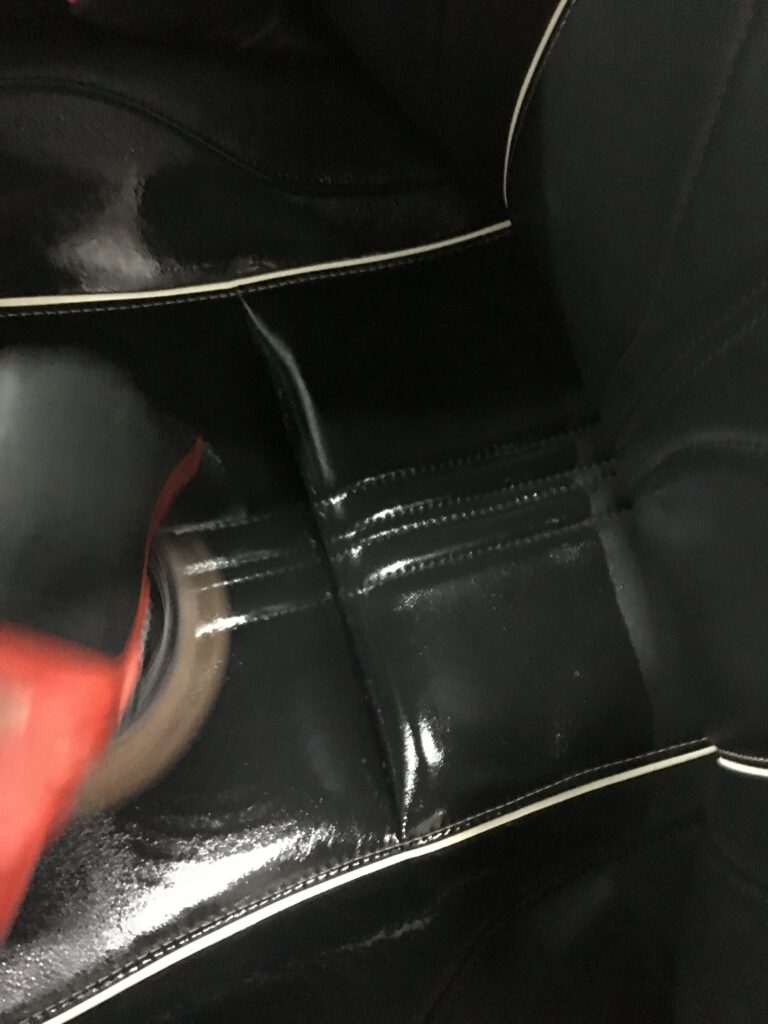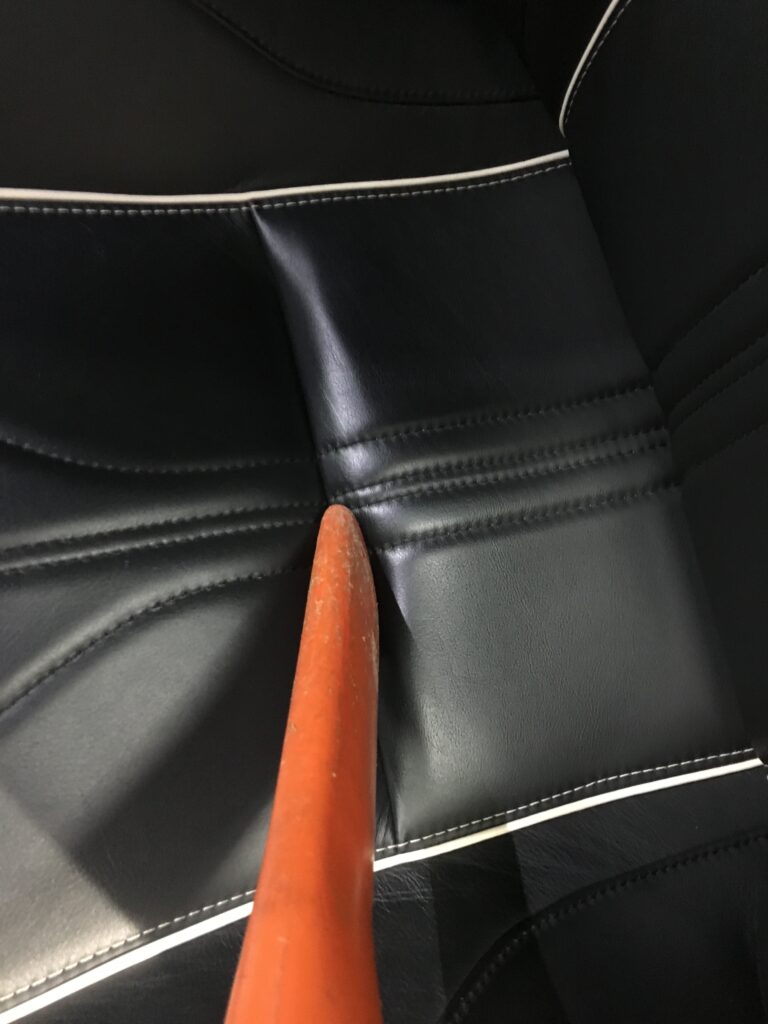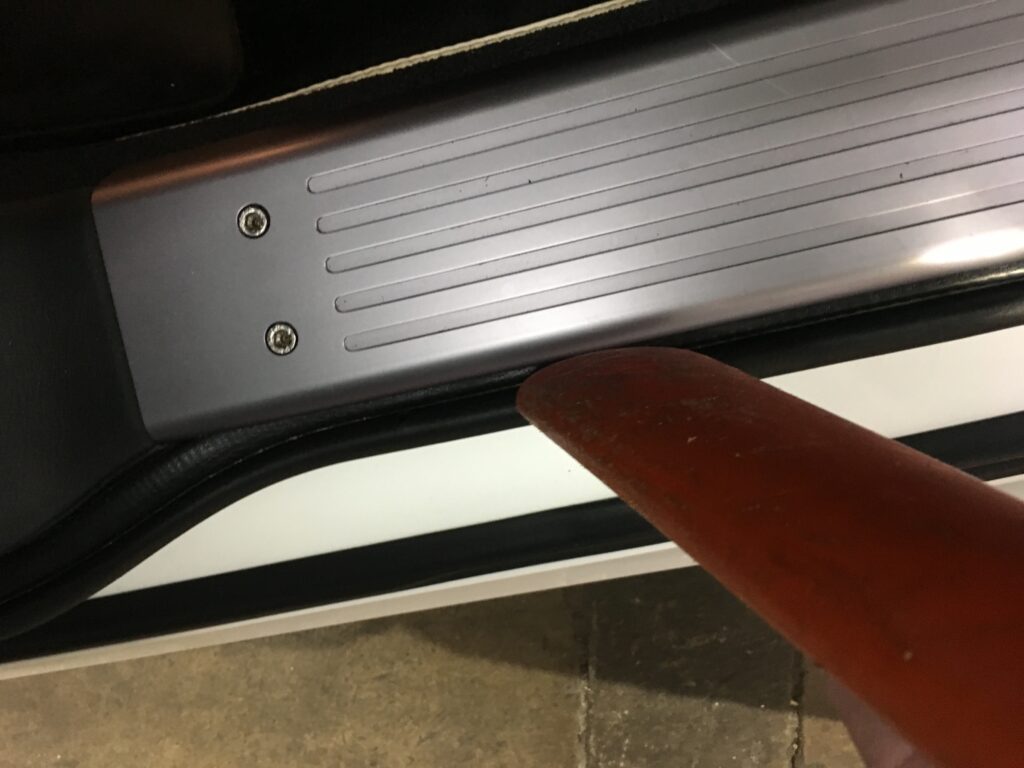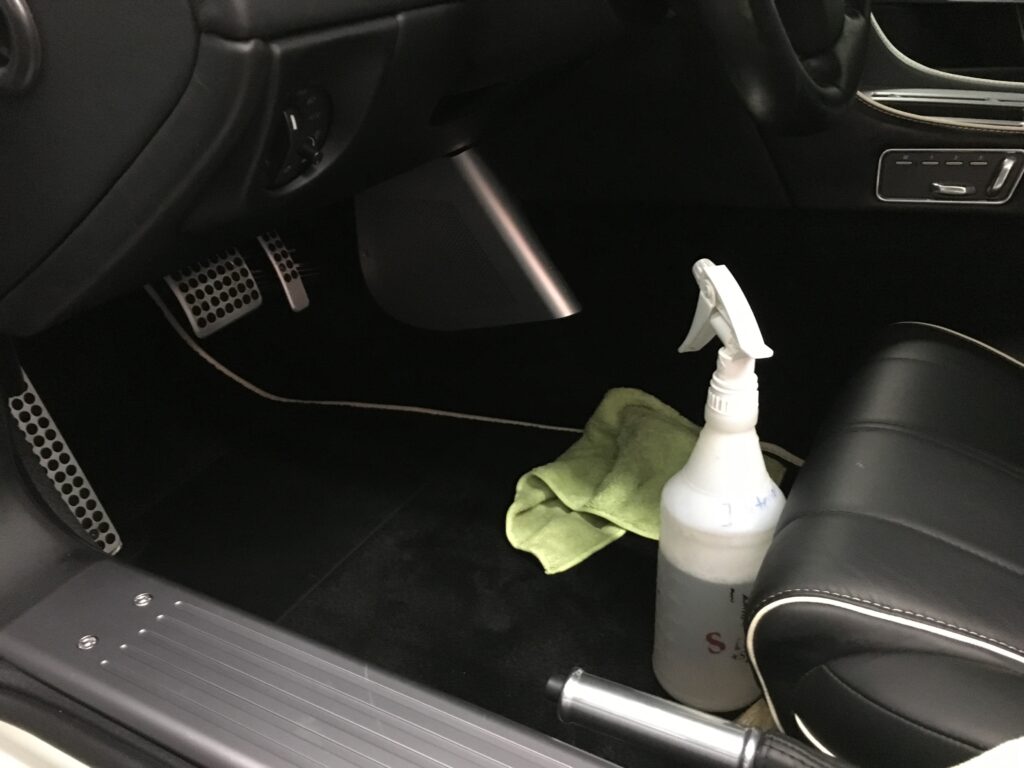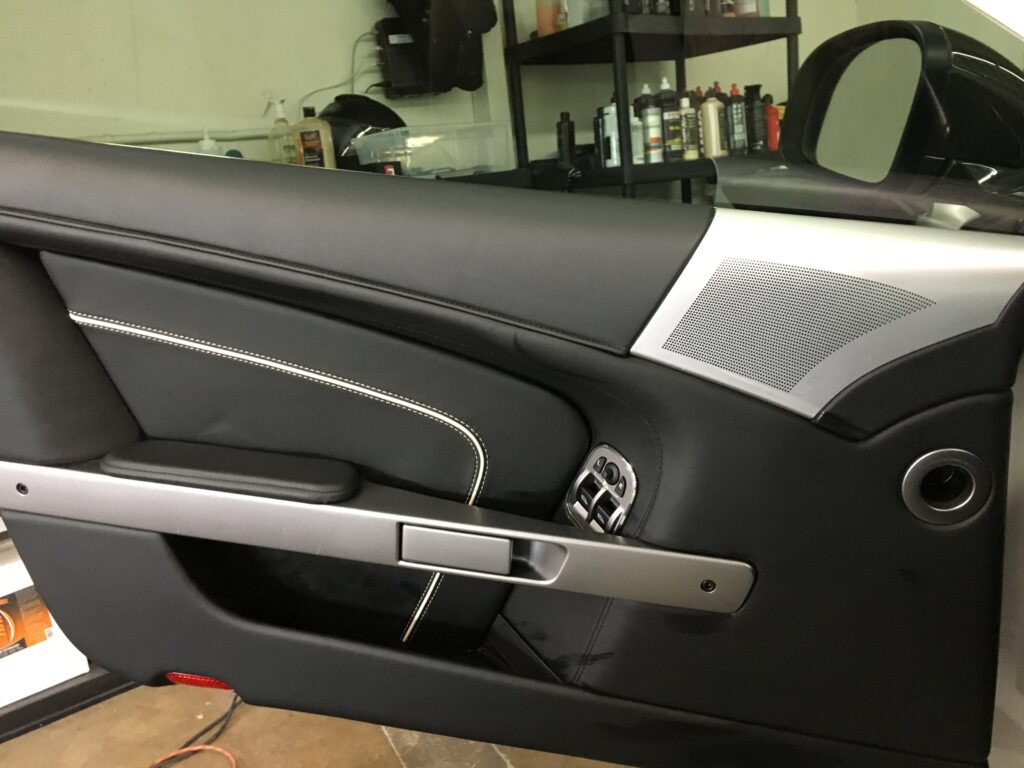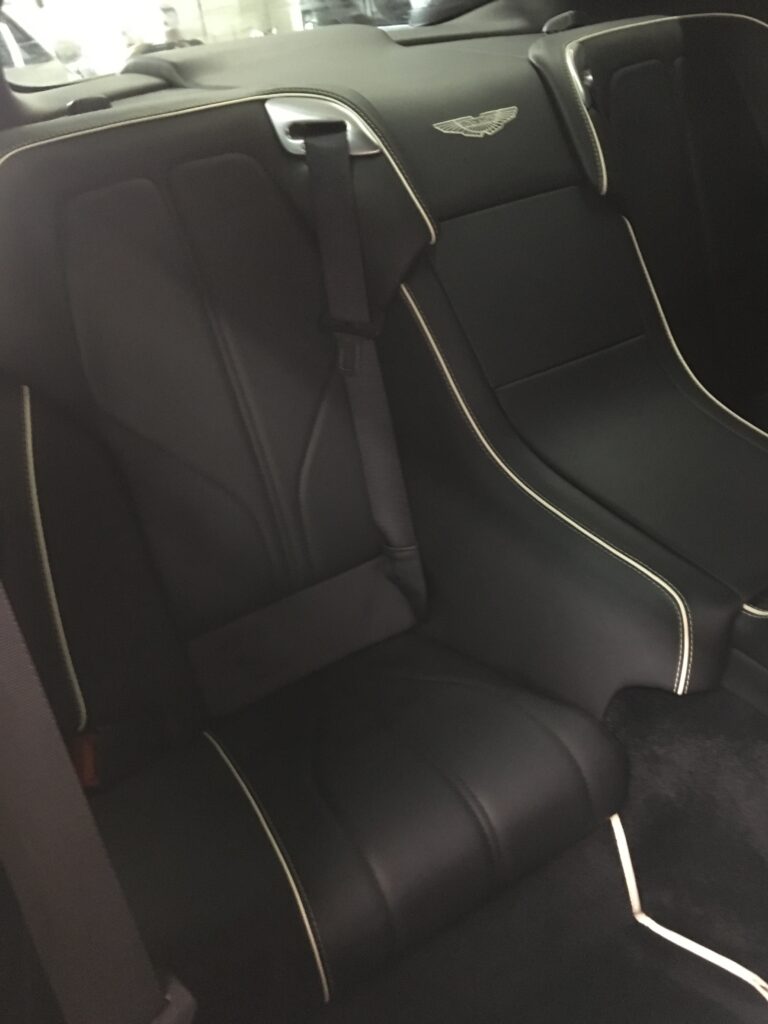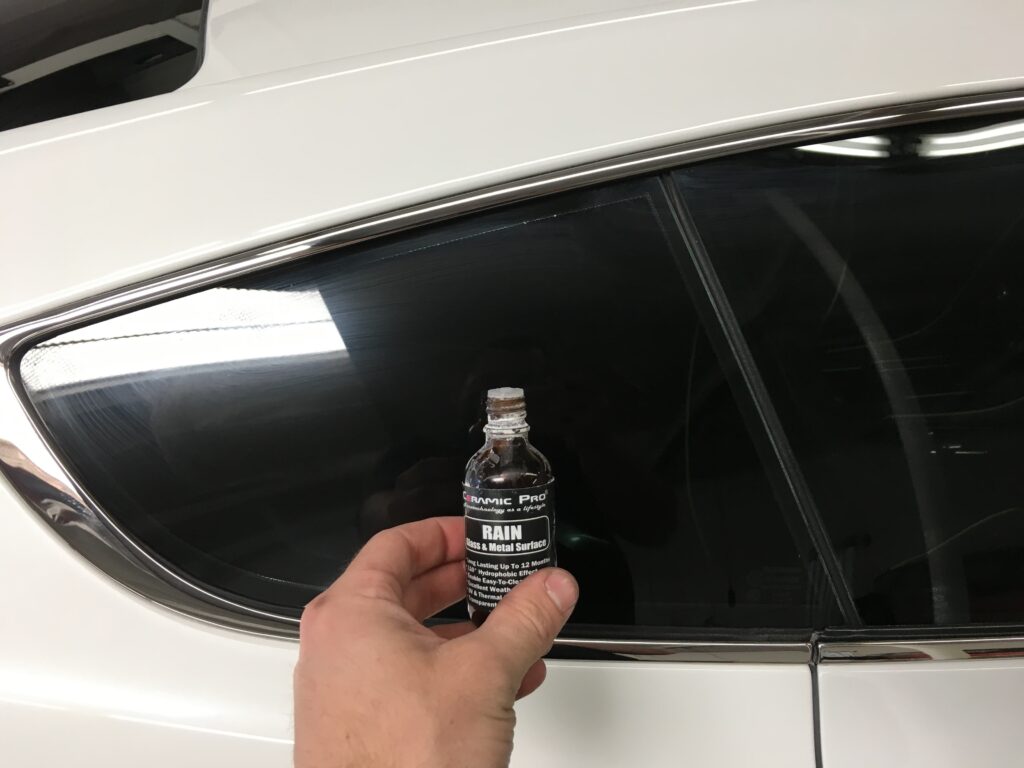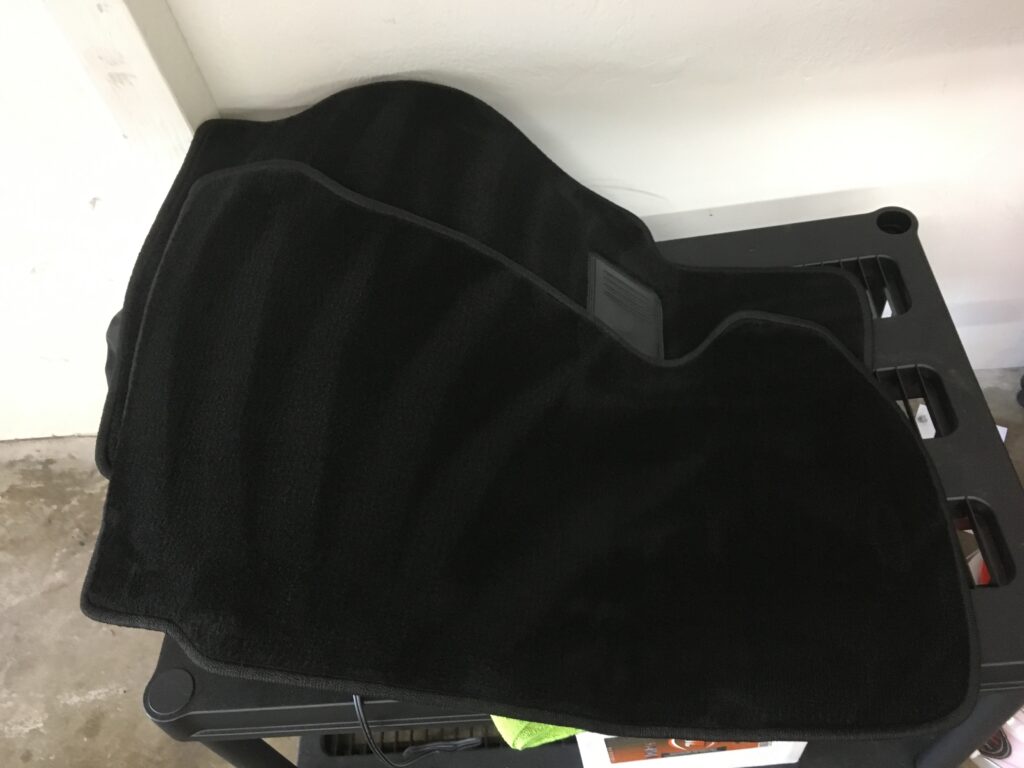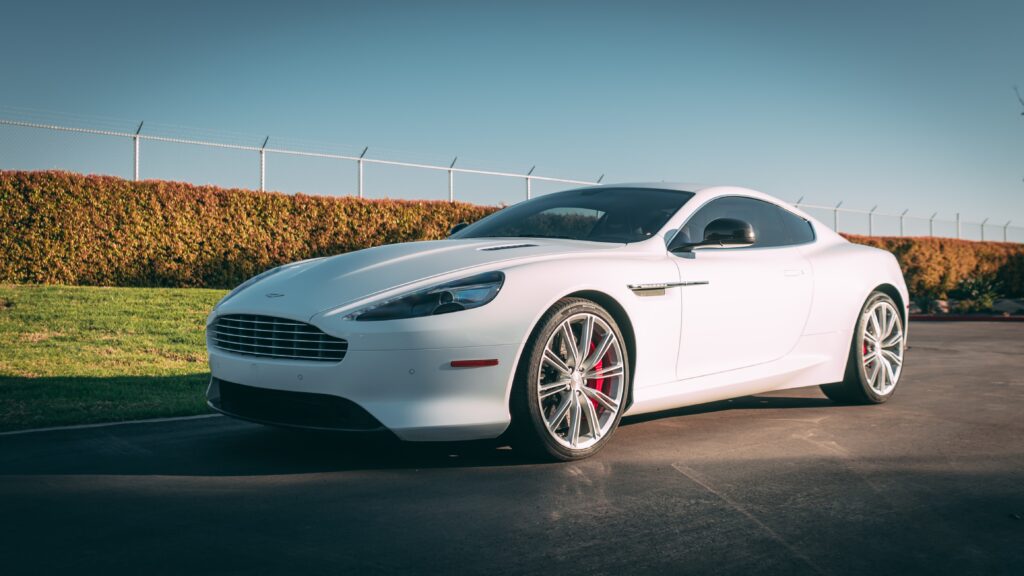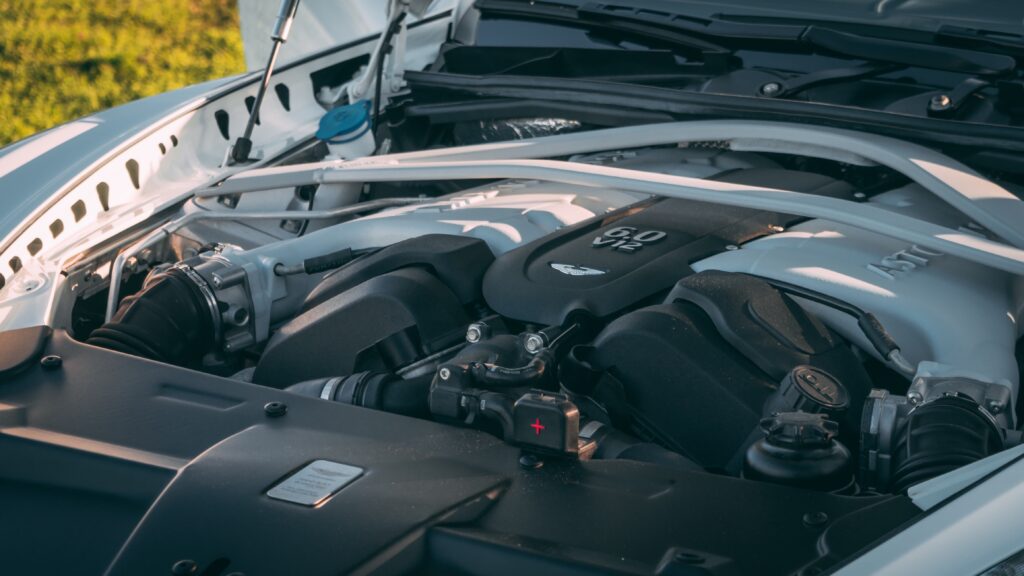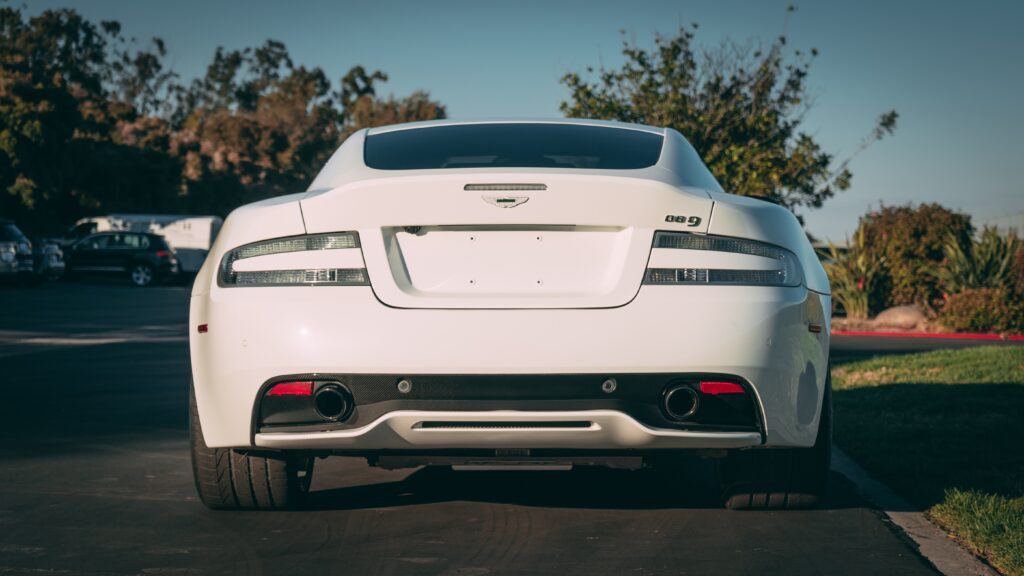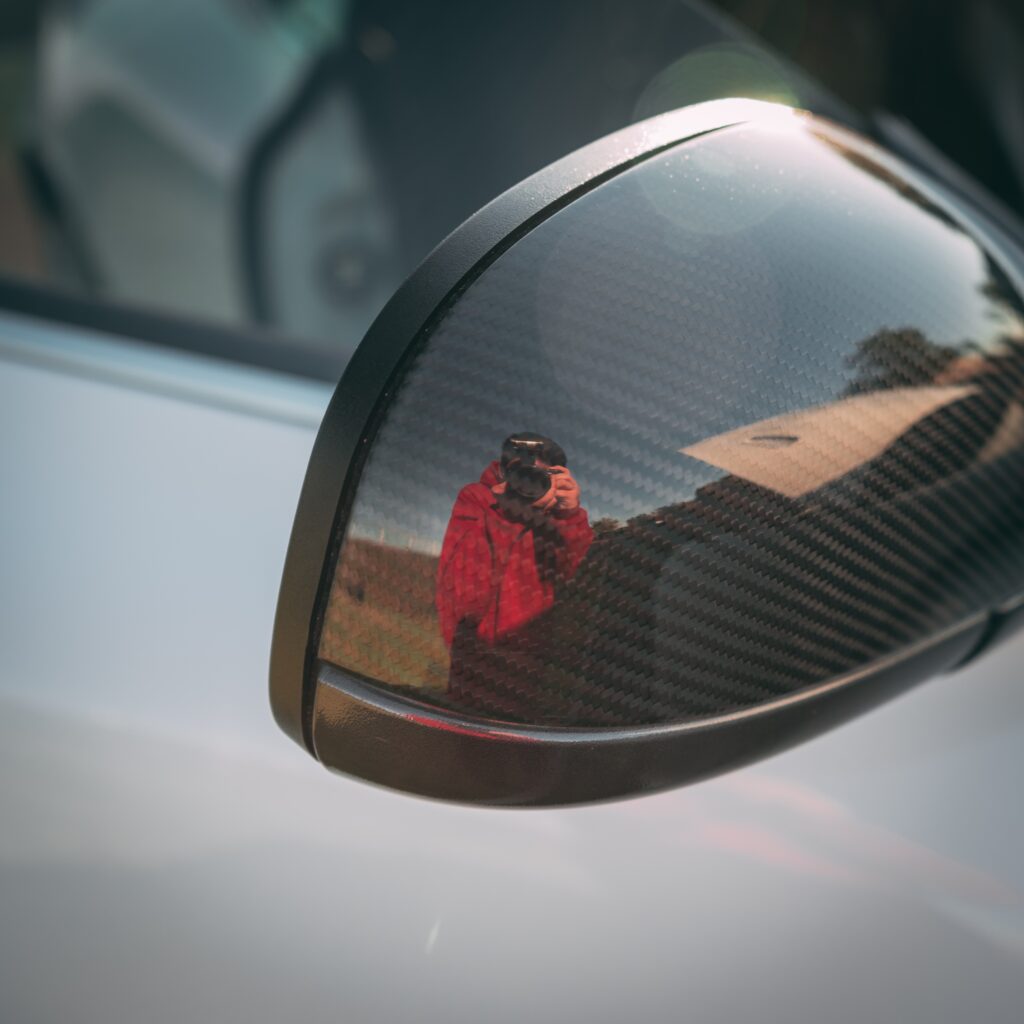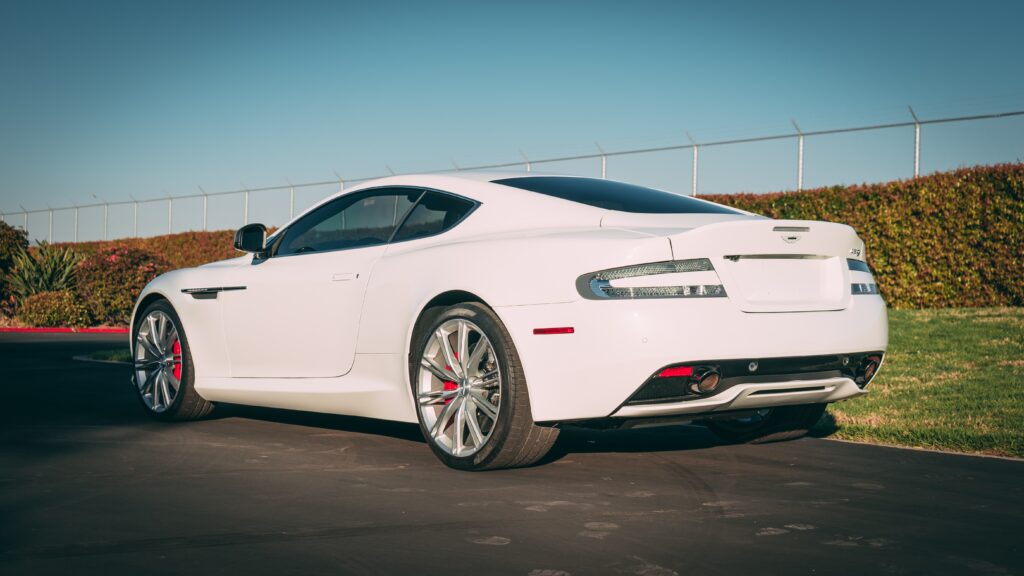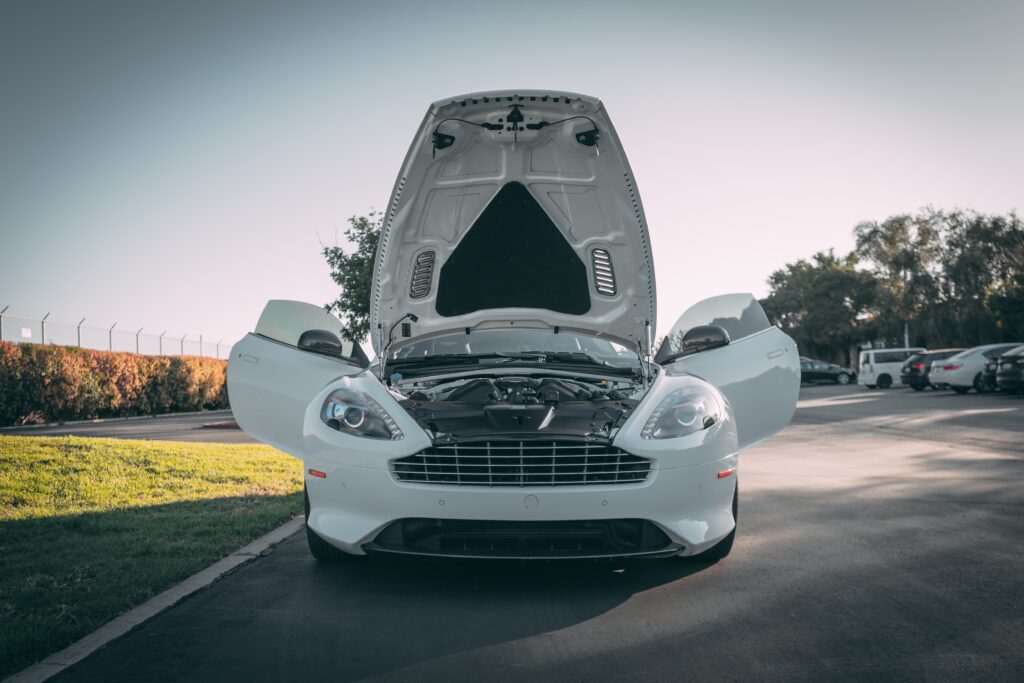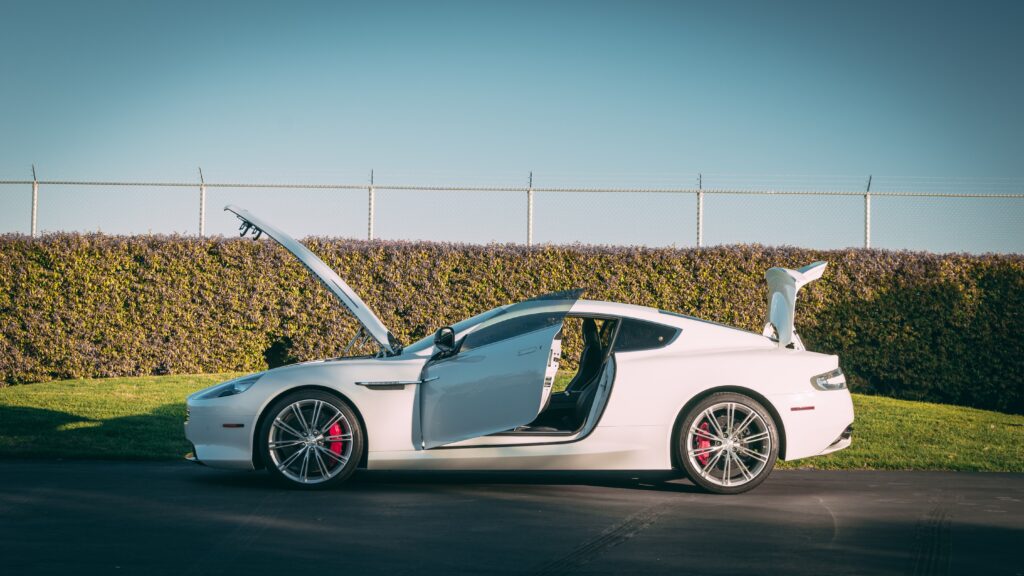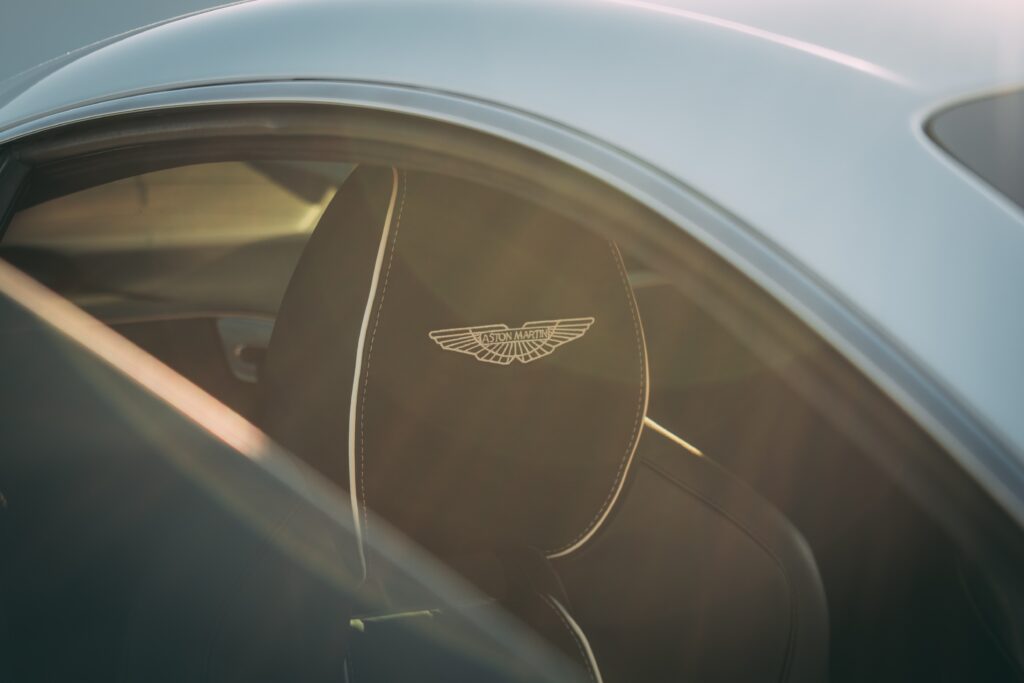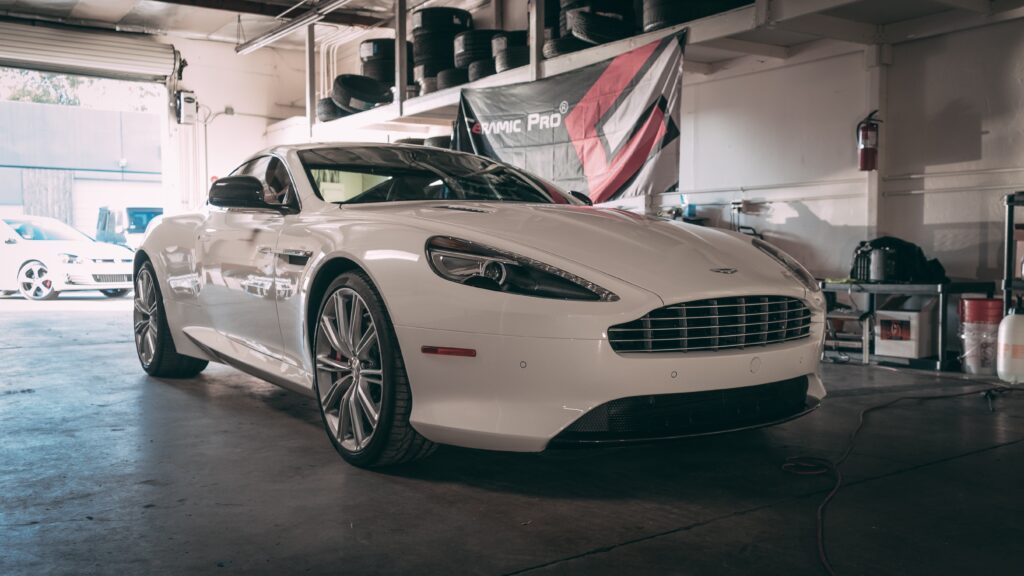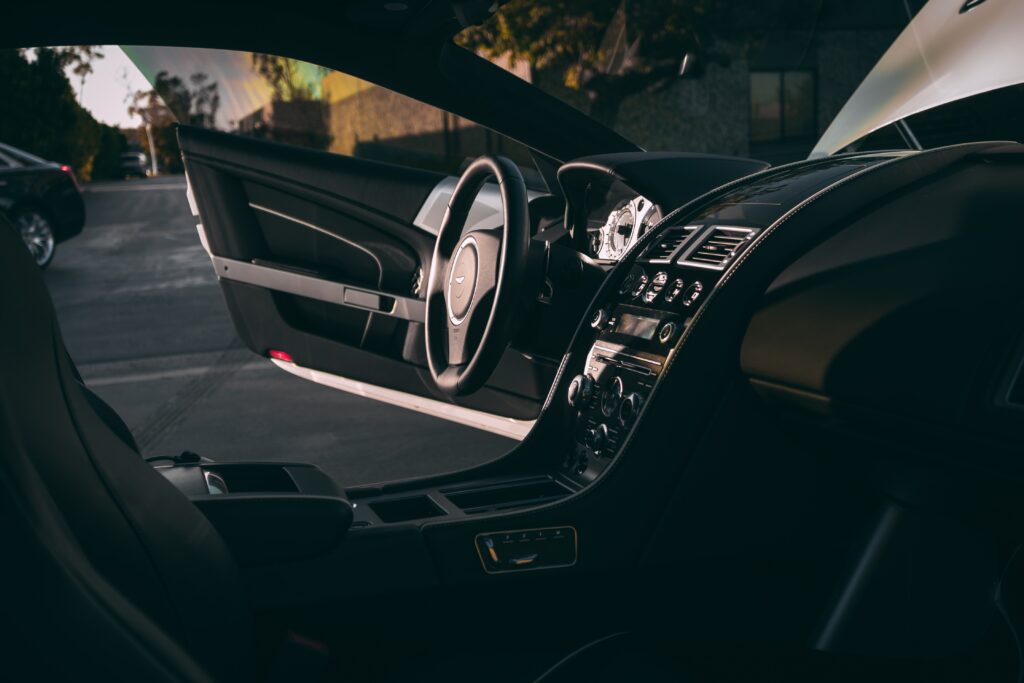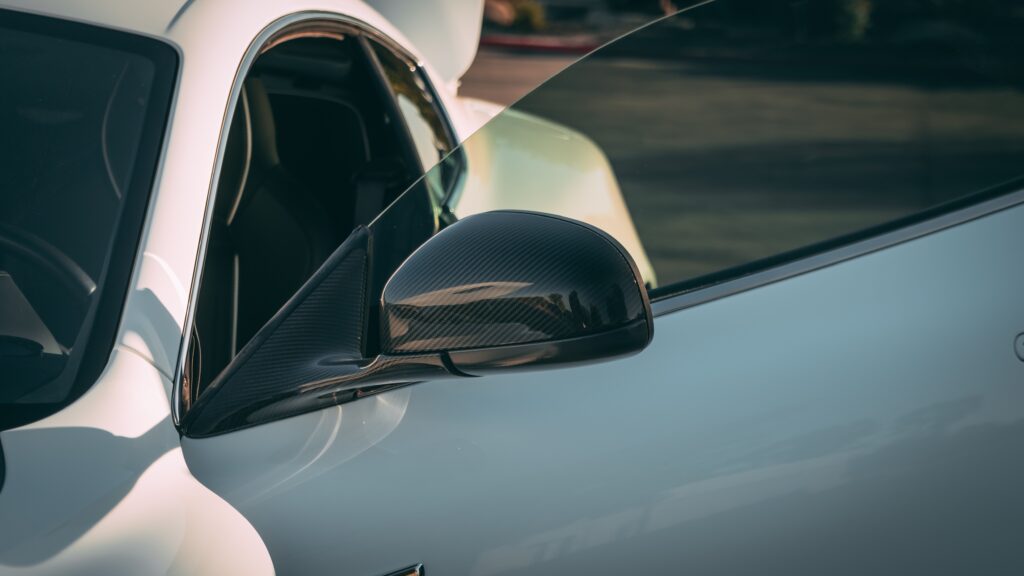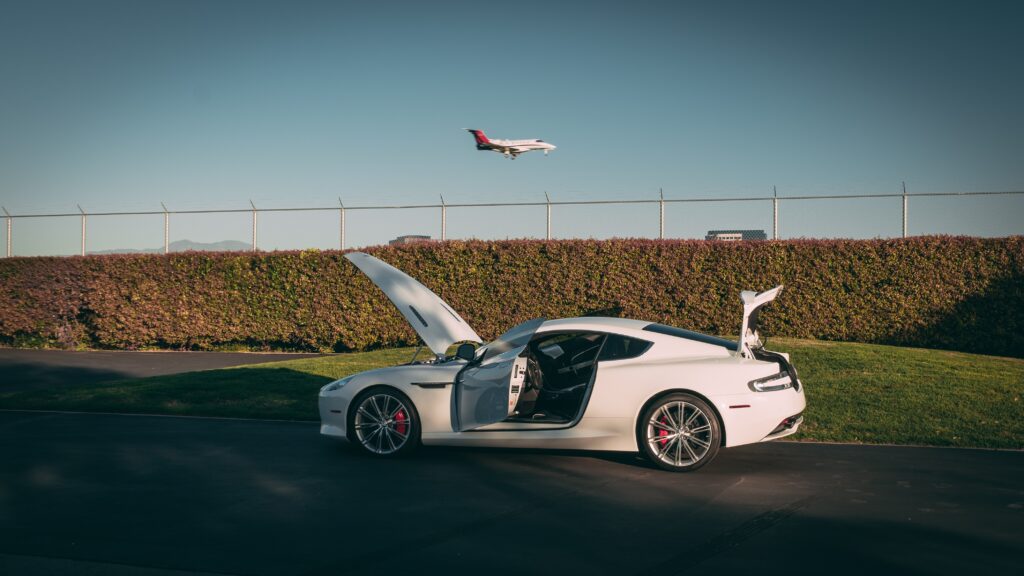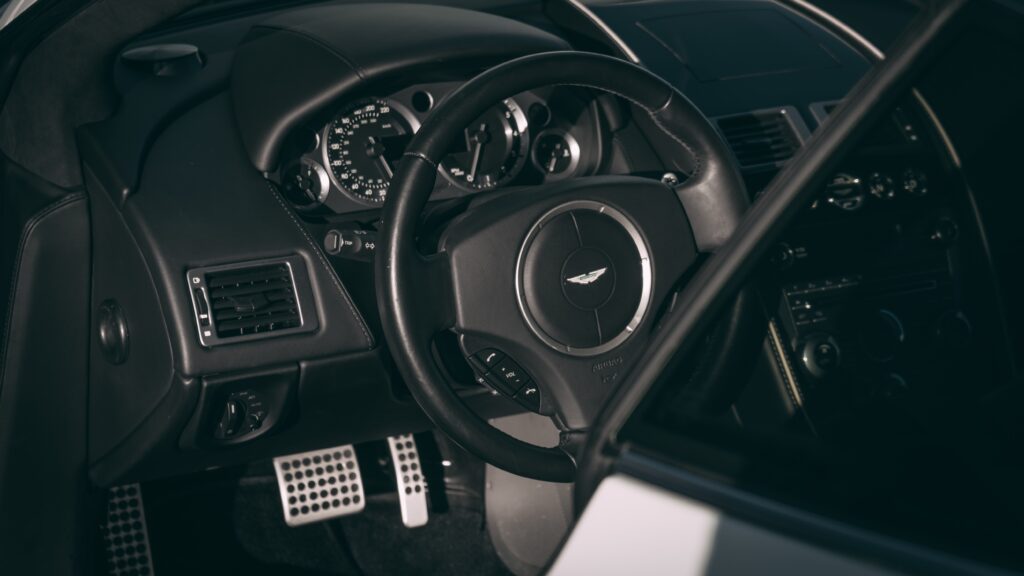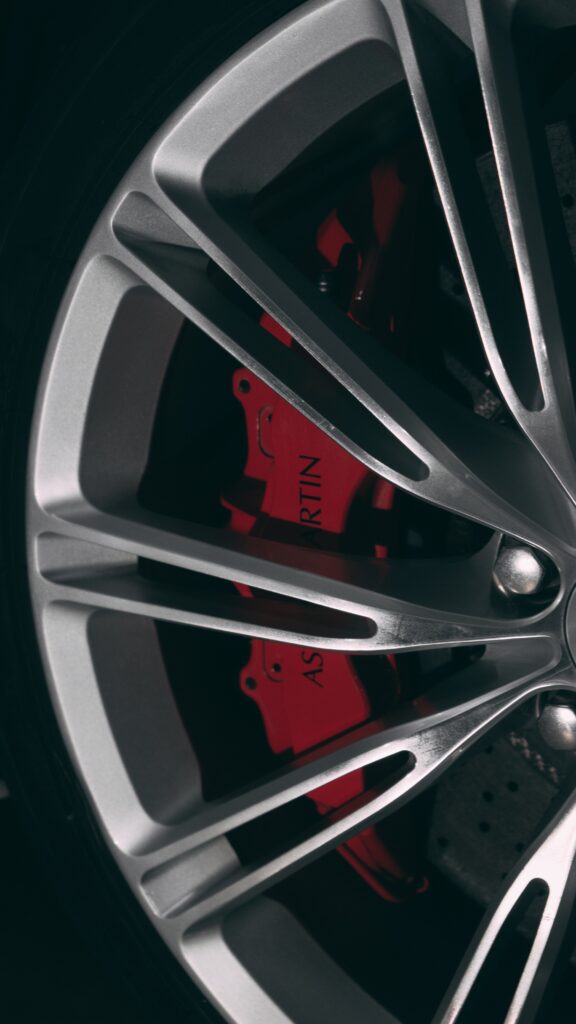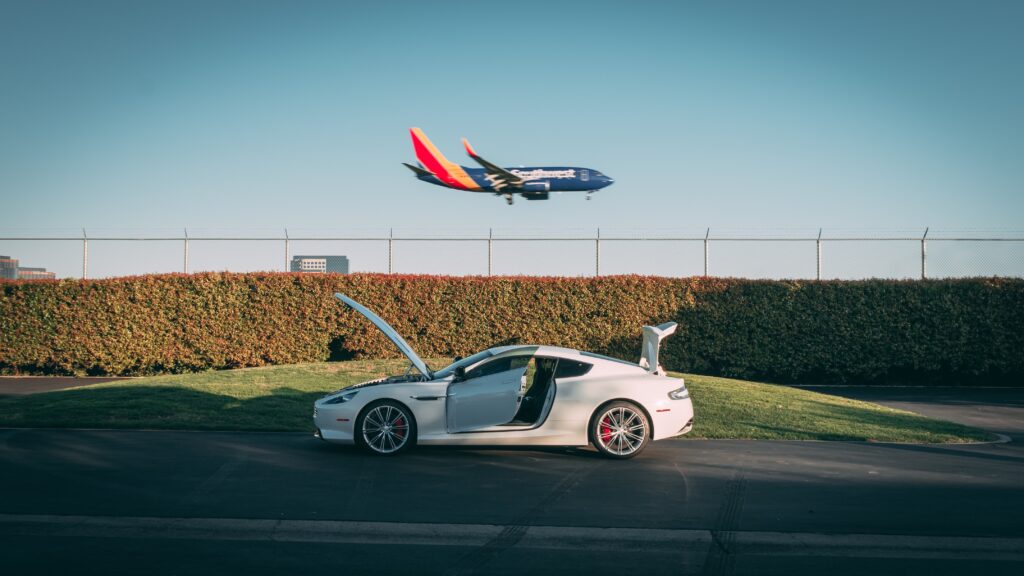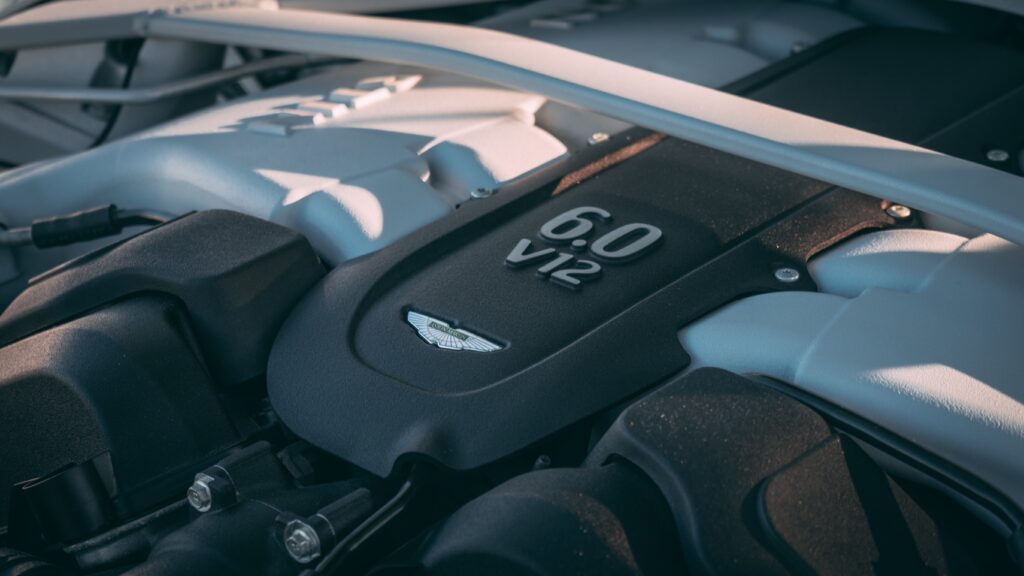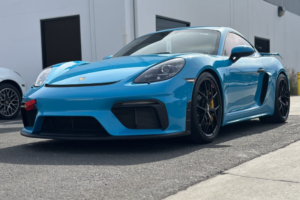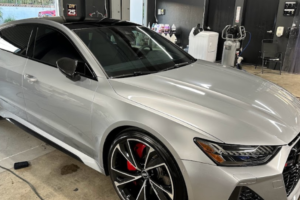This is a 2014 Aston Martin DB9, it boasts around 510 horsepower and 457 ft lb of torque out of its very beefy 6.0 Liter V12 engine. Having always loved James Bond films, I was particularly excited to work on this vehicle. This is the first Aston Martin that has come through our shop. The interior made me giddy, I was intrigued with its center console, the left side mounted E-Brake handle next to the driver seat, and the way the needles on the gauges jumped to life when you pushed the key in to start the motor. Driving it from the front of my shop around the back gave me a huge rush of excitement as I was finally in the drivers seat of one of my dream cars, although I was only driving 5mph, the rumble of the v12 as you lightly pressed the gas was enough to make me giggle and send chills down my spine.
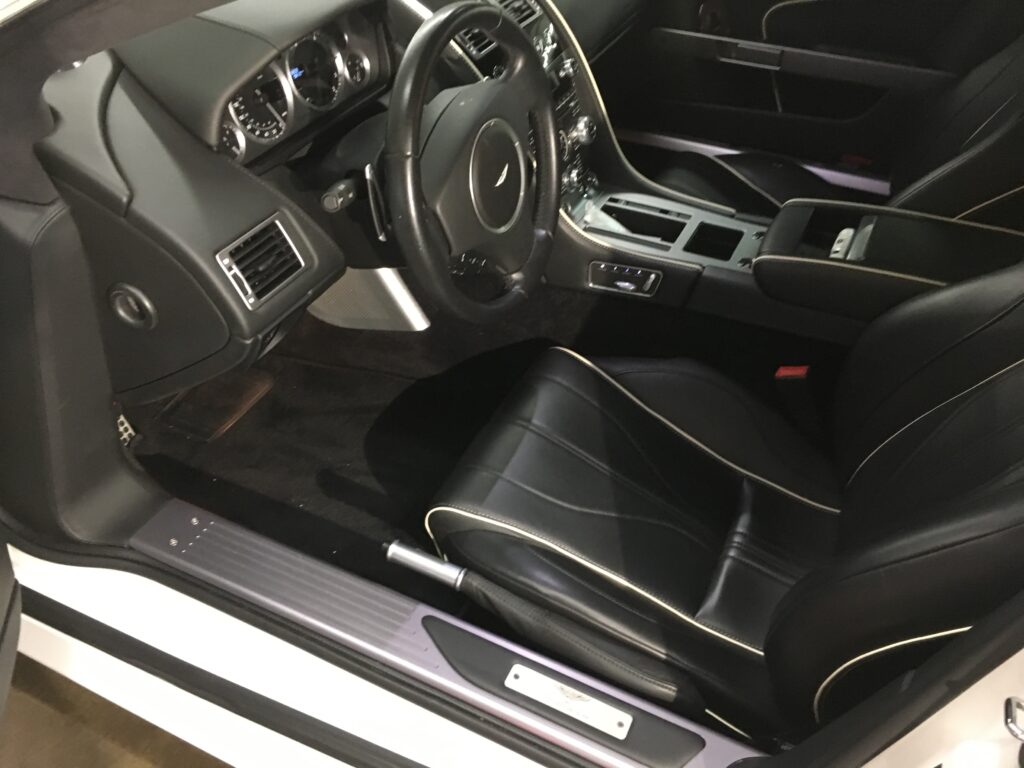
The car was brought in for inspection the day before our cars and coffee meet last Saturday. The paint was in pretty rough shape, you could barely see the pearl flake in the paint, the clear coat felt rough and heavily oxidized with contaminants, the car was just dull over all. The customer asked for my recommendation on what to do, I offered up our top premium package for what I believe is an absolutely premium car. Our top package is the Ceramic Pro diamond package which comes with 10 layers of ceramic coating, 8 layers of 9h, 2 layers of Light, Wheels coated in multiple layers, the interior of the vehicle coated, the engine bay coated, basically the entire car, and included in this service is a full decontamination, a full paint correction to ensure the paint is as flawless as possible, wheels off to be cleaned and coated, interior shampooed completely and the windows polished and coated as well. This is a very expensive service and I will go over why in the rest of this article!
When a car comes in like this, there is only one way to truly decontaminate the paint and that is with a good Iron X bath. White cars often come equipped with small little rust/iron deposits visible in the paint, all cars get these but they are generally only visible on white paint, and man do they take some effort to remove. It takes a lot of pressure and patience with a clay bar to remove these little speckles but Iron X can help ease the labor.
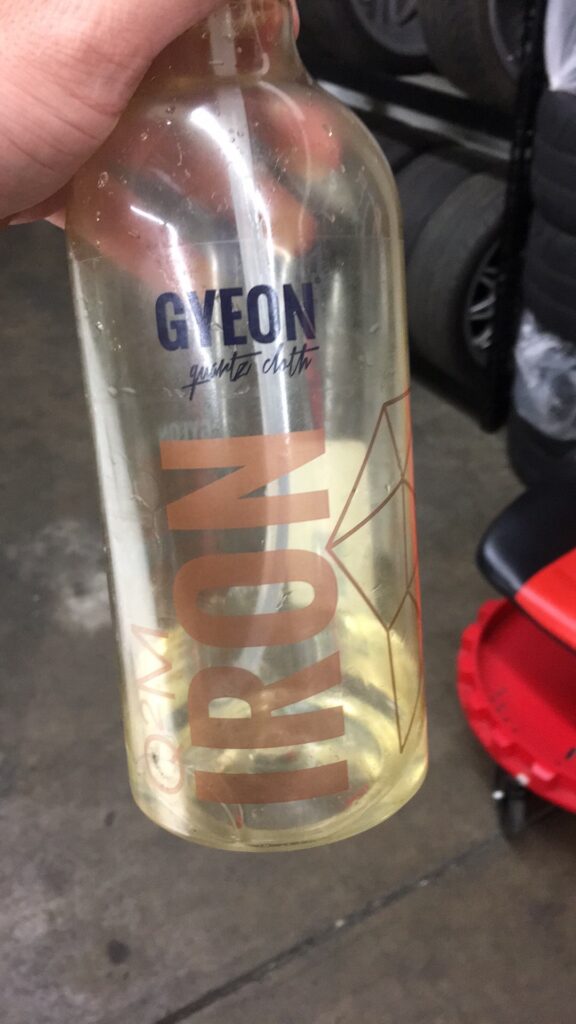
The fun part of using Iron X is it bleeds purple, and looks pretty cool, the not so fun part is that sulfur smell that comes from it, most of the time I want to gag when I spray this stuff. After washing the car and doing a light clay is when you spray the iron X on. I apply it, let it sit for about 10 minutes, go over it with a wet towel, rinse the car off and then back at with a clay bar again to remove what remains of the orange speckles all over the vehicle.
Once we are satisfied with the condition of the clear coat after wash and decontamination, it is important to make sure that the entire car is dry which means using a source of compressed air to blow out all the cracks, behind the head and tail lights, the window sills, any plastic or chrome trim along the car, that way you won’t be surprised by drips while you are polishing, although having a little water on your polishing pad can be helpful, if its dirty water, it’s going to make things worse.

Normally we just wipe down door jams of dirt and any compound dust or residue before giving a car back to a client, but on an occasion like this when a Diamond package is being applied to a vehicle, we go as far as to clay, polish and ceramic coat the door and trunk jams as well, these are common areas for dirt to gather and for scratches to be found. To get this car completely contaminant free took over 2 hours of claying alone, and required use of not only a traditional clay bar but also a heavy duty clay sponge from Nano.
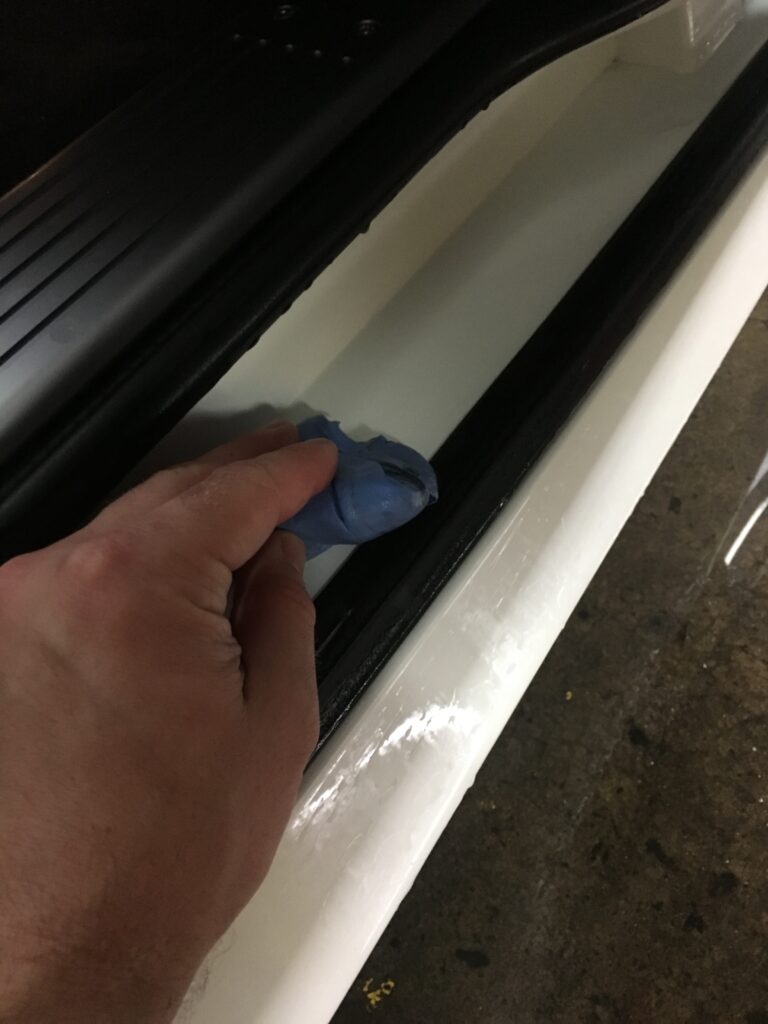
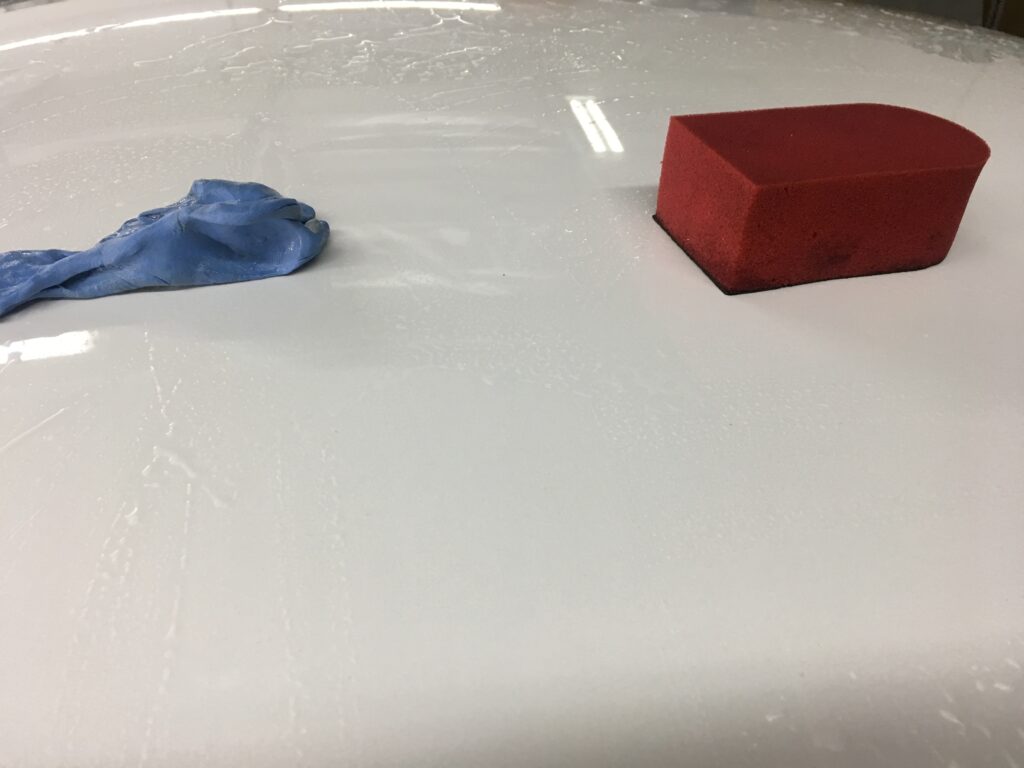
Once the DB9 was fully ready on the exterior for polishing, it was time for the most time consuming part, the paint correction. This car was not as bad swirl wise as some other cars that have come in to see us but there were many deep RIDS (random individual defects and scratches) which often require extra compounding which on some occasions might not be the best thing for the clear coat, the more you work one spot, the thinner the clear gets and becomes less level with the paint on the rest of the panel.
We go through many phases with compounds and polishes here, right now were on a kick with Shine Supply using their Classic Cut and Classic Polish. I also like to use Meguiars 205 polish, I find it provides a very nice finish and is easy to remove from paint without being too oily as it is a water based product.
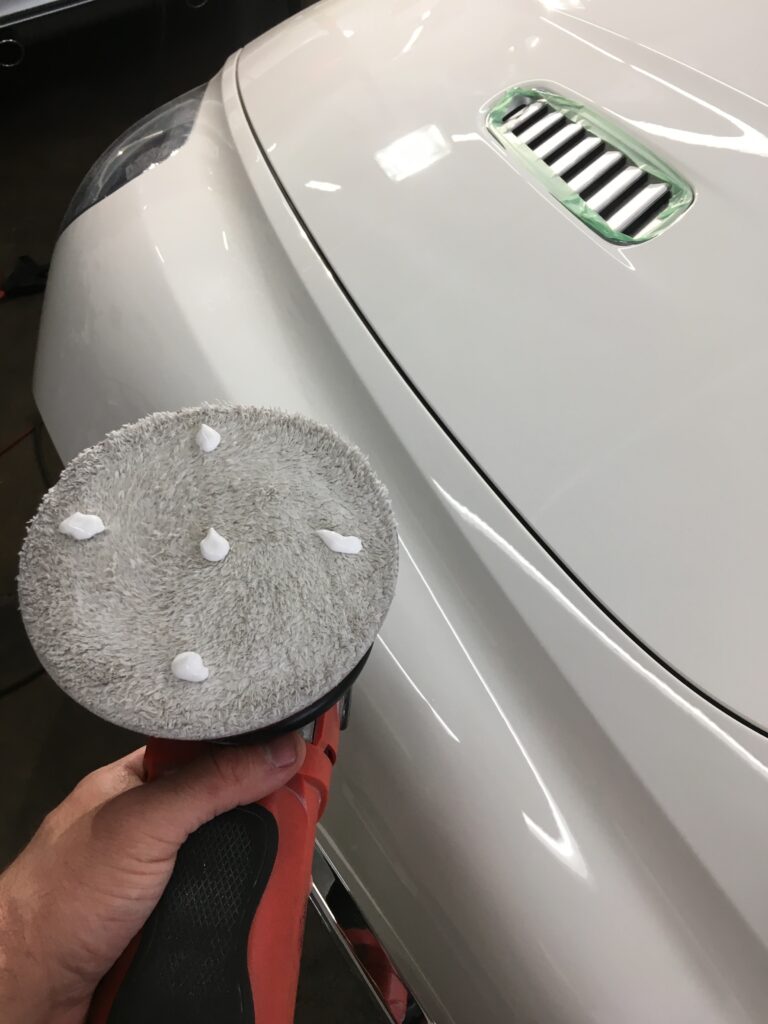
I start by taping off anything that can be potentially damaged by a buffer before attacking the paint. I like to start off by priming my pad (getting the whole pad covered in product, not too heavily but enough to get the microfibers covered), and then applying 5 dots on each corner of the pad and the center, this way the product will spread out better and the pad will stay coated in compound.
Using light to medium pressure on speed 4 on a griots boss 15 polisher, we polish a 2×2 square on each part of the panel until it is swirl free and with as few RIDS left as possible. The hardest panels are always the hood, the roof, the trunk, I have no idea why but the yard.
Sometimes there are obstacles to get around while correcting a car, although it may seem simple, some people do not think to do things like stuff a towel in the door so you can keep it partially open while you polish the lower area of the door without bashing the backing plate off the side skirt or any other curved panels. If you look closely at the picture to the right you can also see how scratched up these panels were.
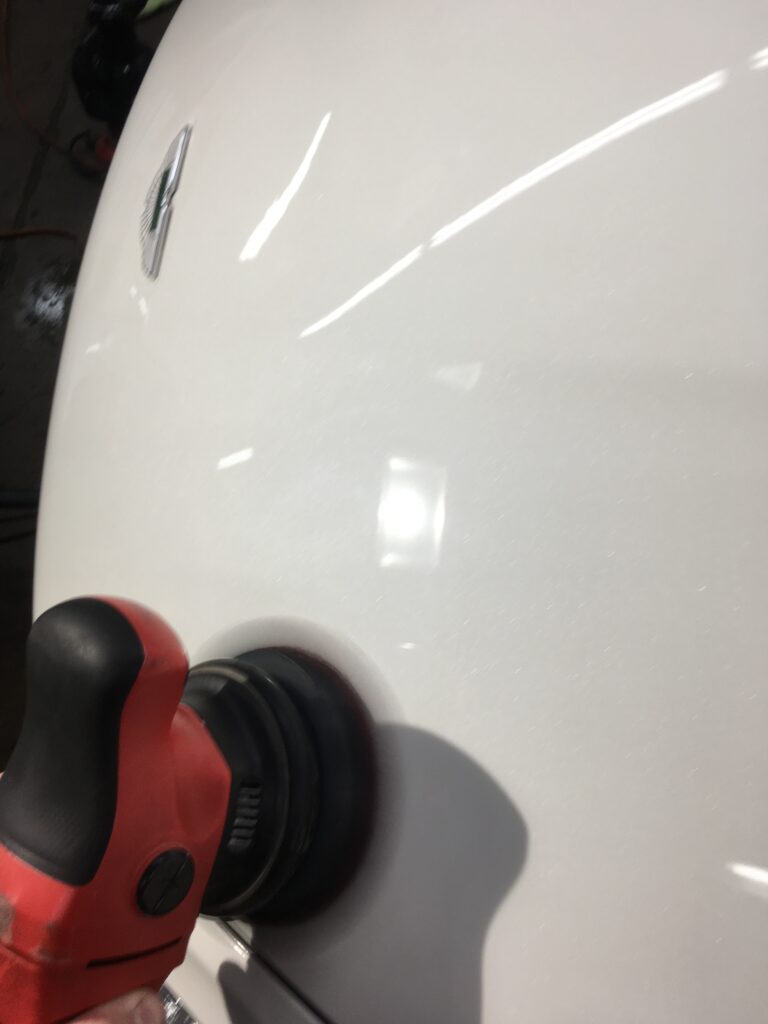
After the paint is corrected with compound, you move to step 2 which is now using an orange foam cutting pad with one drop of classic cut and one drop of classic polish to help refine the finish a bit and remove any micro marring left behind from microfiber pads. The final step after that is polishing with a soft black pad with meguiars 205 to gloss the hell out of the paint and give you that miraculously shiny finish before the coating even goes on! The 3 steps of paint correction implemented into this detail was around 12 hours labor split between 2 people, so a whole whopping 24 hours of man hours just polishing the paint to get it looking as great as it does.
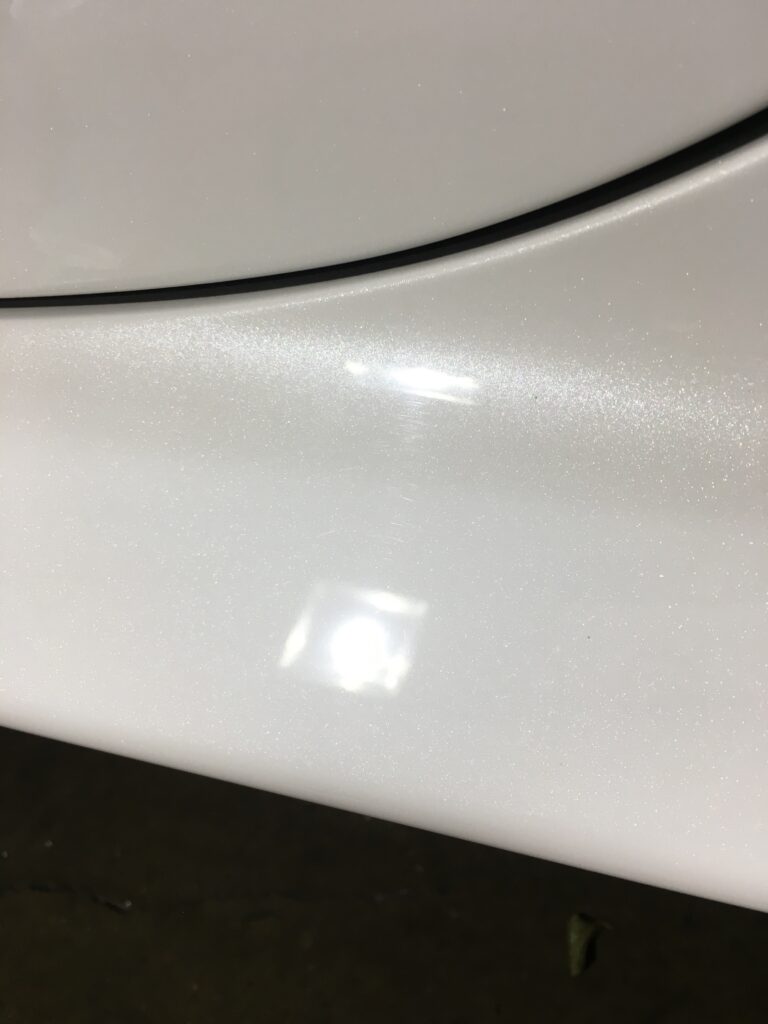
Next comes the wheels off detailing, normally we clean the faces and if a wheel spoke pattern allows it, I will scrub the daylights out of the inner barrel of the wheel, clean up the caliper and coat everything. In this case the Aston was raised up, wheels removed, soaked in iron X and wheel cleaner to remove dirt and oxidation, while they soaked the inner carpeting in the wheel wells was brushed clean of debris and dust then coated in Ceramic Pro Textile carpet coating. The calipers were soaked in cleaner, brushed off with a paint brush and sprayed down with water and then wiped down with a towel. The wheels were cleaned in a similar fashion. Before applying Ceramic Pro Wheel and Caliper to the wheels and calipers, they were prepped with Kleen Strip Prep All which strips all greases and oils off of clear coat so the coating will bind properly.
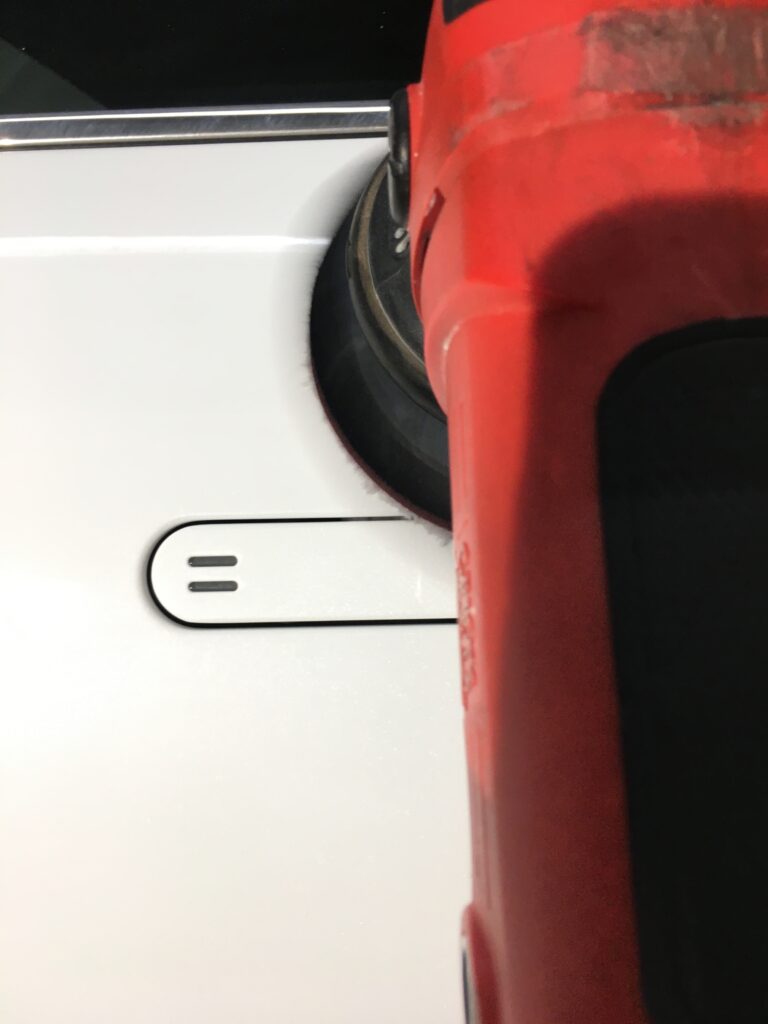
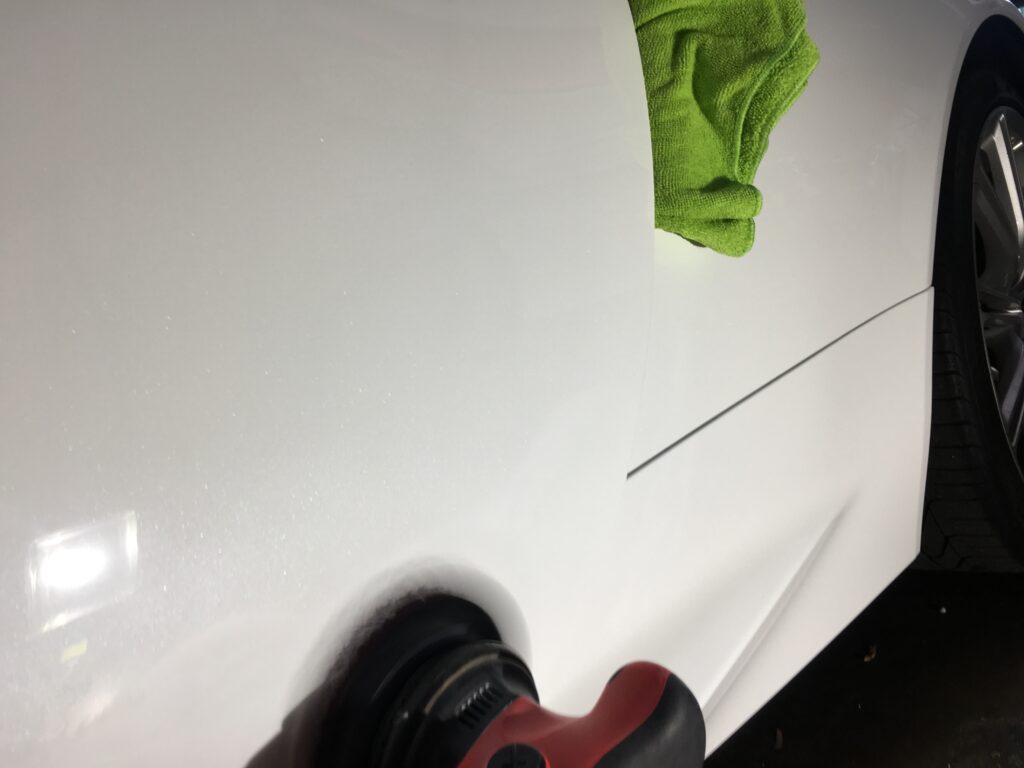
With the wheels back on the car and it back on the ground, I moved onto the engine bay, Engine bay detailing is almost never done here as it is a high liability job and as we don’t pressure wash cars, spraying down an engine bay in our shop is not usually an option. Usually we just wipe down the plastics and any metal piping, throw a trim dressing of some sort on the plastics and call it a day. My process for this engine bay was soaking it in a light cleaner, gently agitating the dirt around the bay with a brush, spraying down the engine with my mini pump sprayer and getting into where ever I could reach with a towel and then prepping all the surfaces with a prep spray.
It is important to make sure you thoroughly clean the engine bay once you have started, it is easy to wipe down a few spots but to really get your fingers in the cracks is another story, on a detail like this, I did my absolute best to ensure everywhere I could reach with my relatively large hands was dirt free. To ensure no electrics were fried upon starting the car again, I spent a good 30 minutes blowing out the engine compartment with a mini air blower. It is best to clean an engine bay after compounding the car as usually dust collects in the cracks and then you will find yourself going back over everything with a towel again.
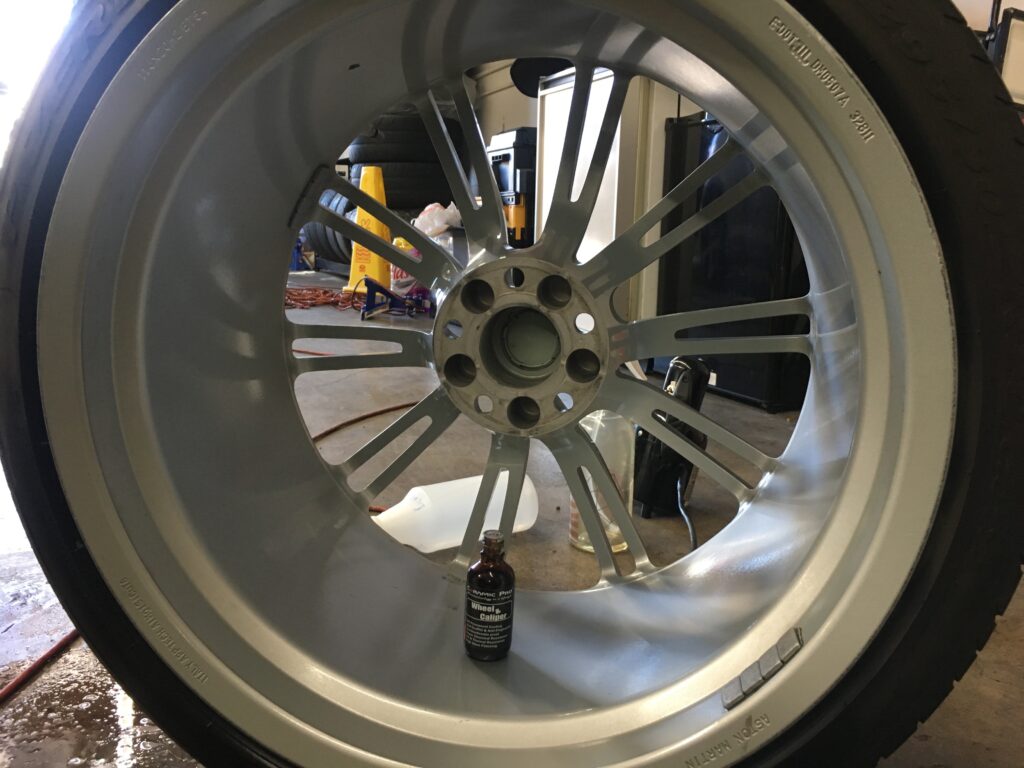
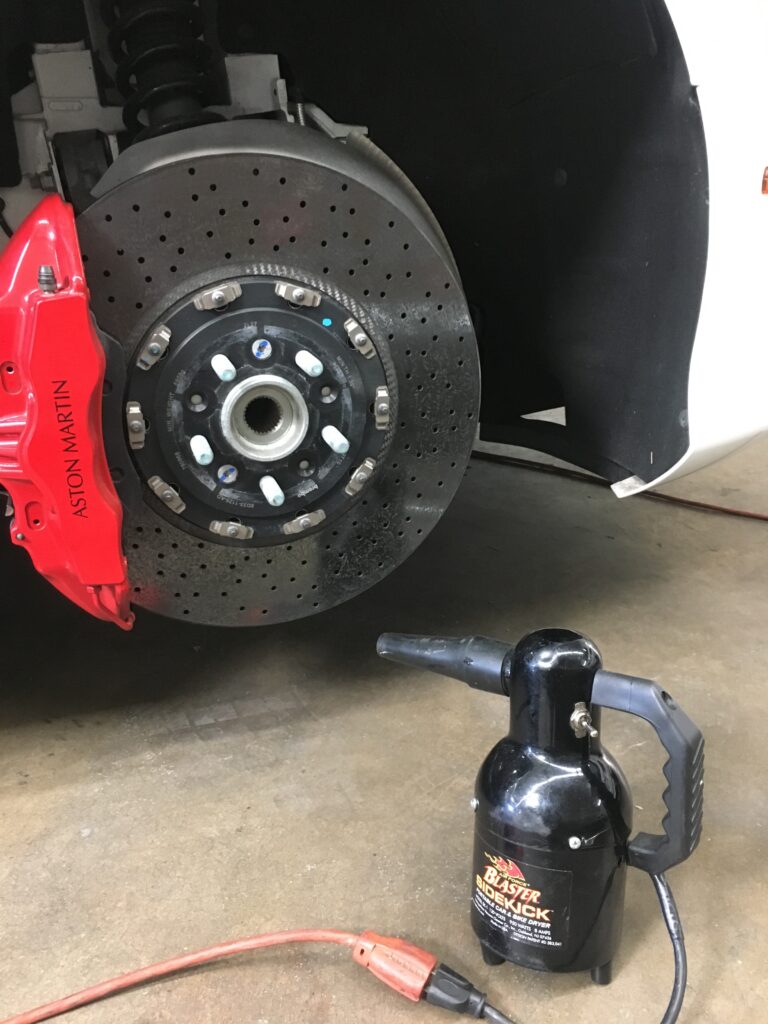
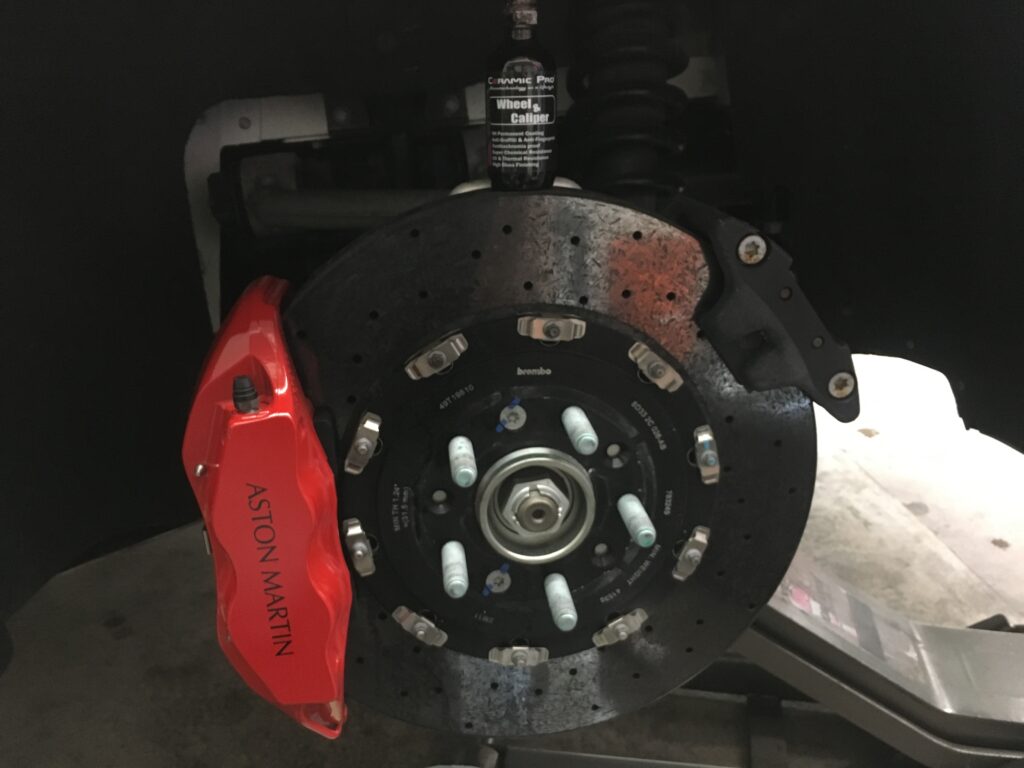
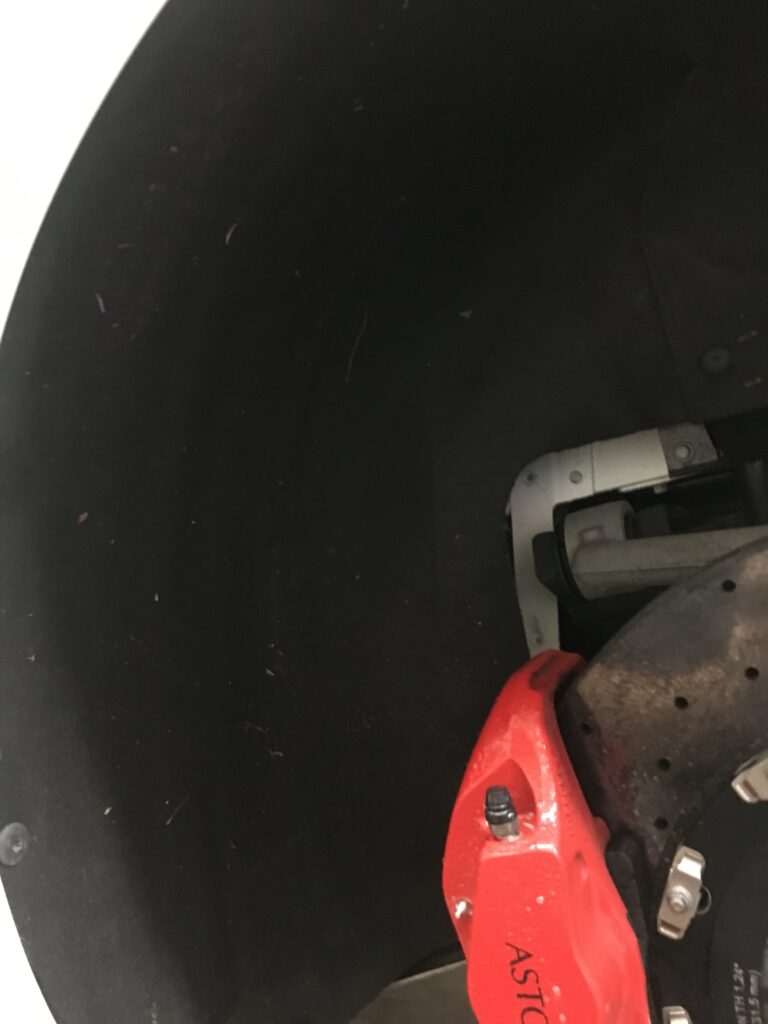
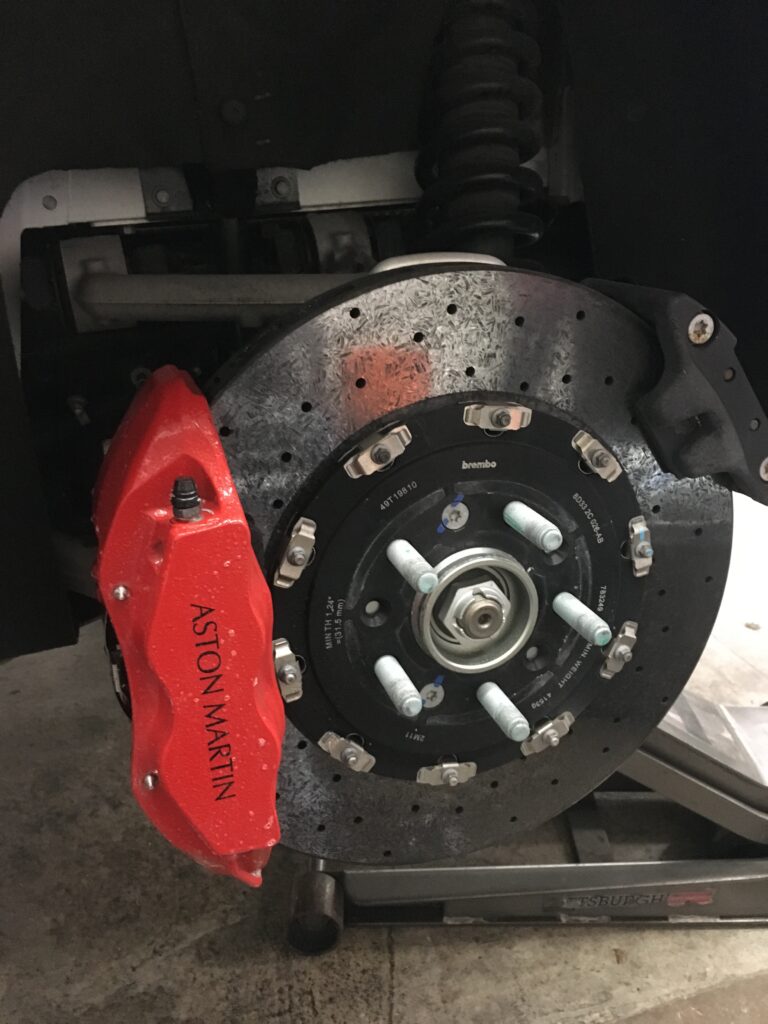
Along with cleaning the engine bay also includes compounding water spots off the grill by hand with a microfiber pad, every piece of detail oriented work you can think of goes into a package that costs as much as this one does. The bay was coated in Ceramic Pro plastic which works wonders on all plastic surfaces. I coated the intake manifold with 9h as well as the inner parts of the fender and underneath the hood itself.
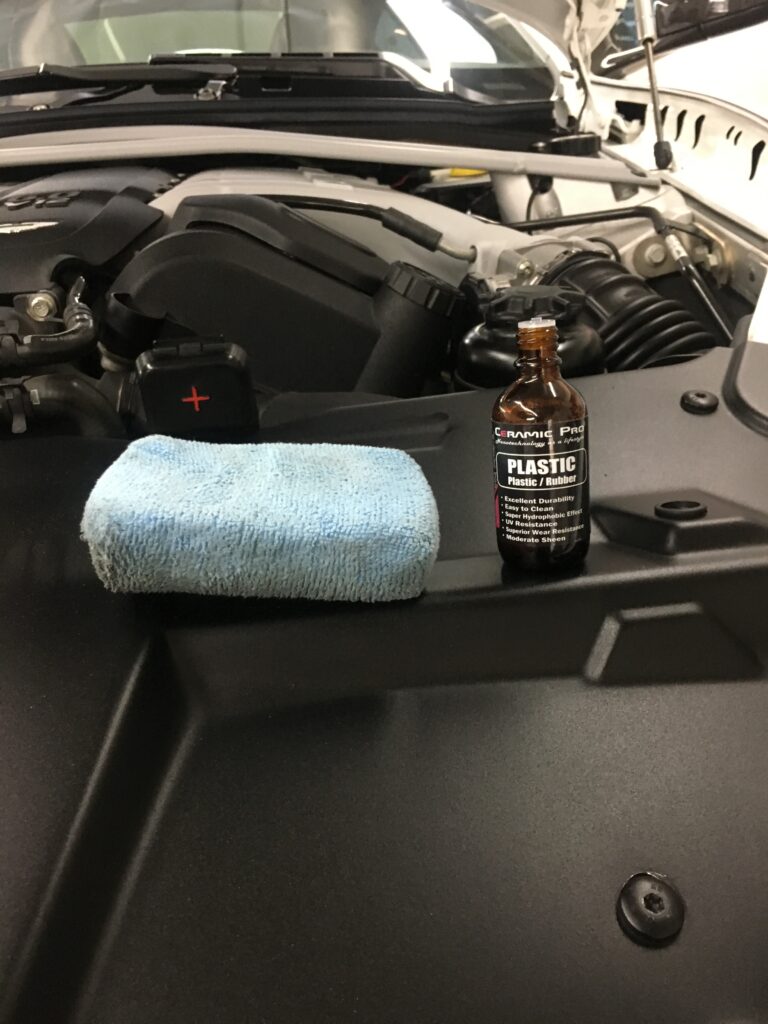
If you’ve noticed we haven’t discussed actually coating the paint yet its because that is the last step, it is good to do all these dirty jobs before applying any sort of protection to the paint, since you generally need to lean against the car or be going in and out of the doors while doing the interior, there is a chance to implement minor marring on the paint with clothing you are wearing or to get dirt on already clean surfaces. I always save coating for last in case we need to re polish or wipe down any surfaces after doing the wheels, engine and interior.
We are almost to the end though! The interior came next, I spent around 4-5 hours on the interior, not because it was in bad shape but because I wanted to ensure it was absolutely perfect!
I took a bunch of pictures of the interior because quite frankly i’ve never spent this much time on an interior of a 2 door vehicle before and I was quite proud of the work I was doing, so I laid them all out below. Scroll down to continue reading the interior cleaning and coating process.
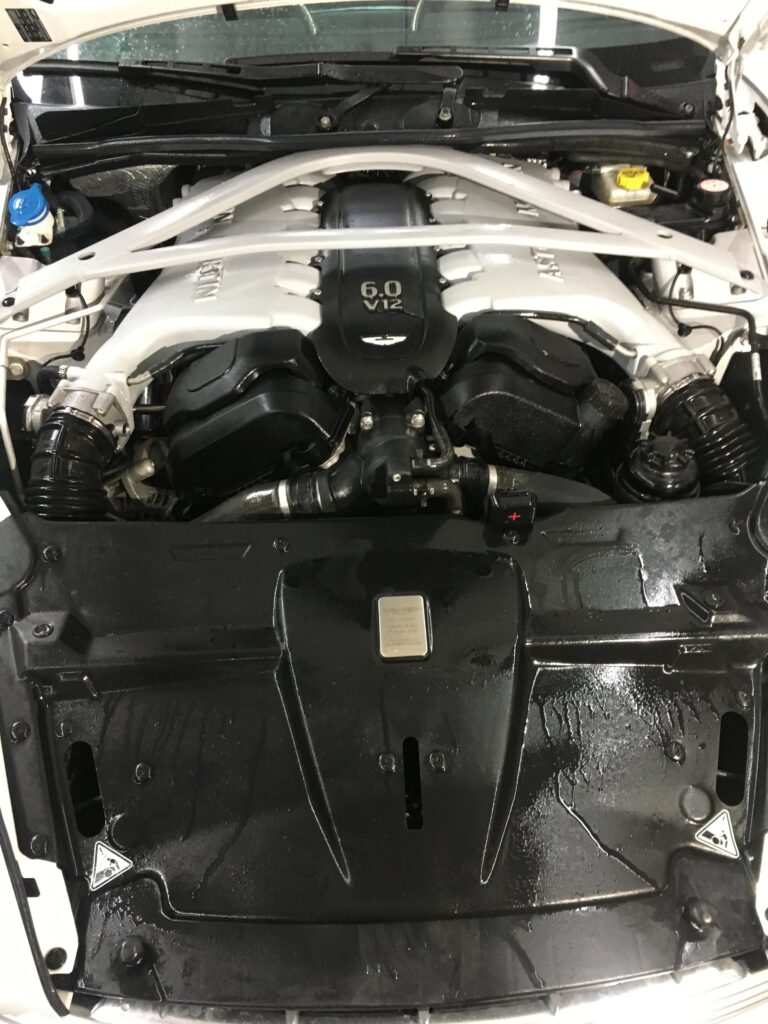
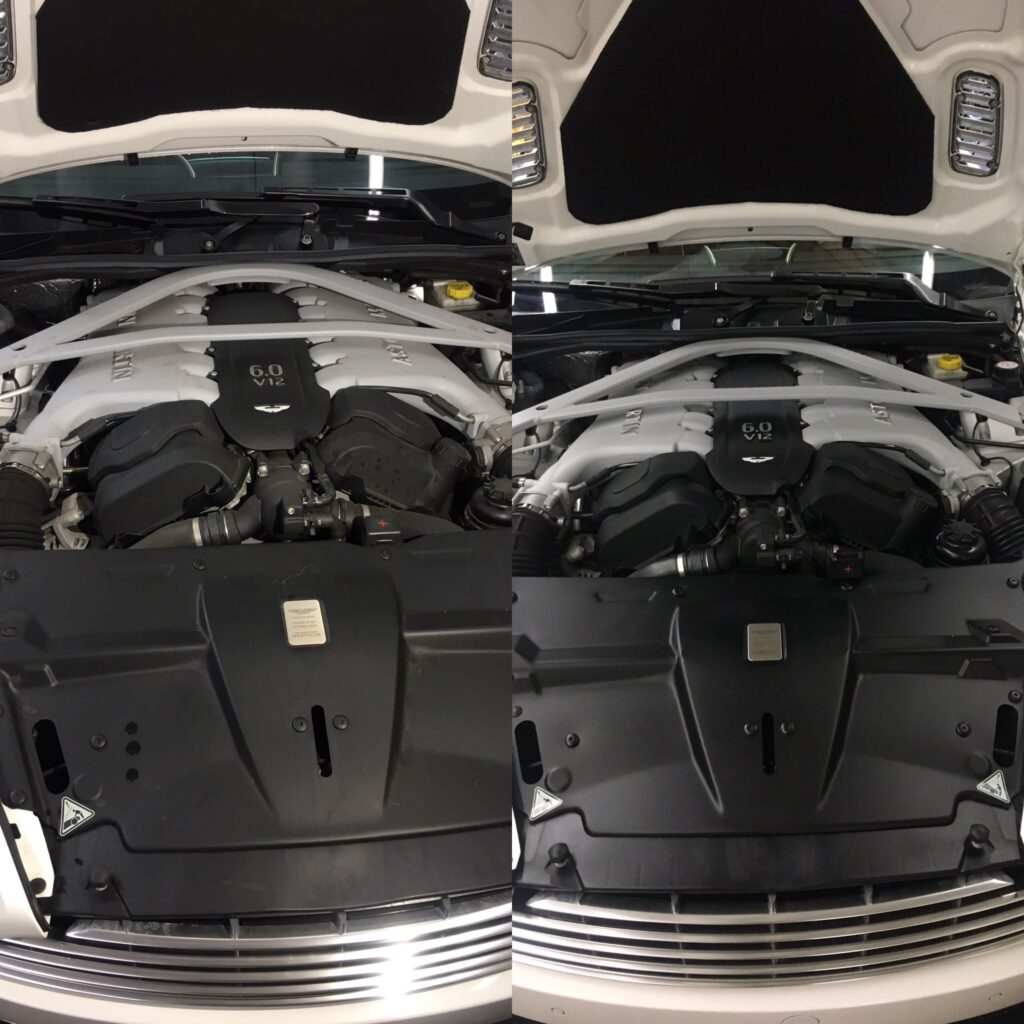
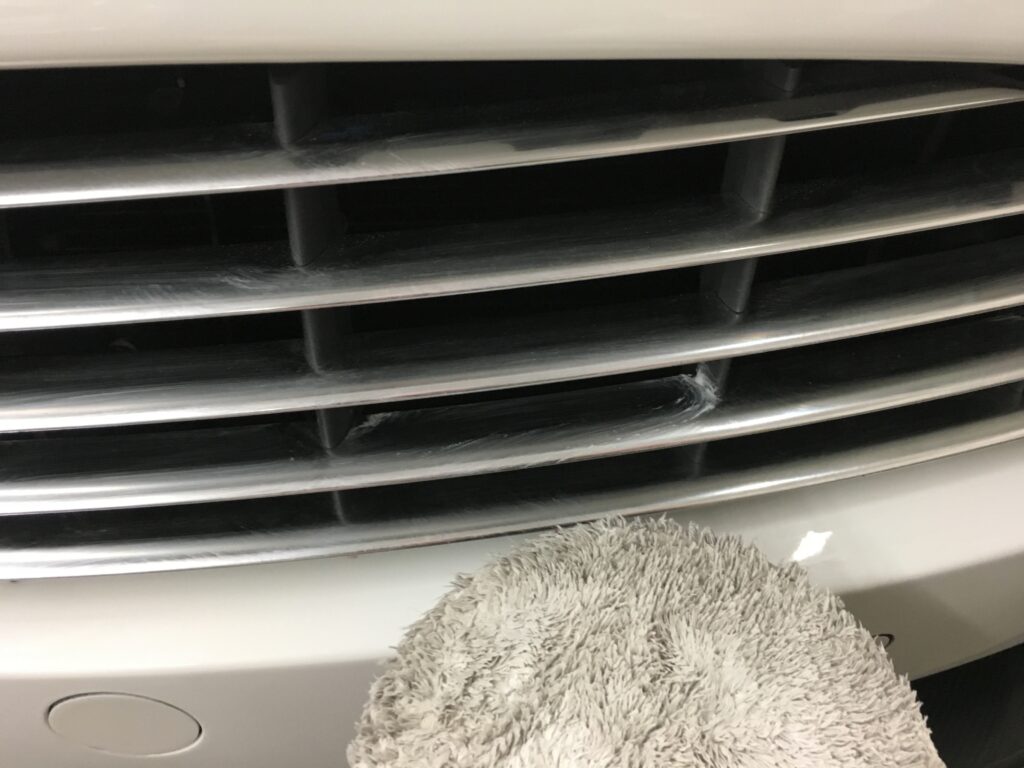
The interior is the first thing a customer comments on when they pick up their car. You could spend 3 days polishing and waxing paint but if you didn’t vacuum the interior, before the customer even says good job on the paint, they will drop a complaint on the condition of the interior even if they didn’t pay you to clean it for them.
It is important to be as thorough as you can be on the interior detail, get into the cracks in-between the seats, brush out the vents of any dust, use a fine detail brush to get dirt out of tiny cracks between plastic panels, when vacuuming leather seats, make sure to pull the leather apart so you can clean in the cracks, this is a commonly missed spot, don’t forget to clean the trunk and coat the jams as well!
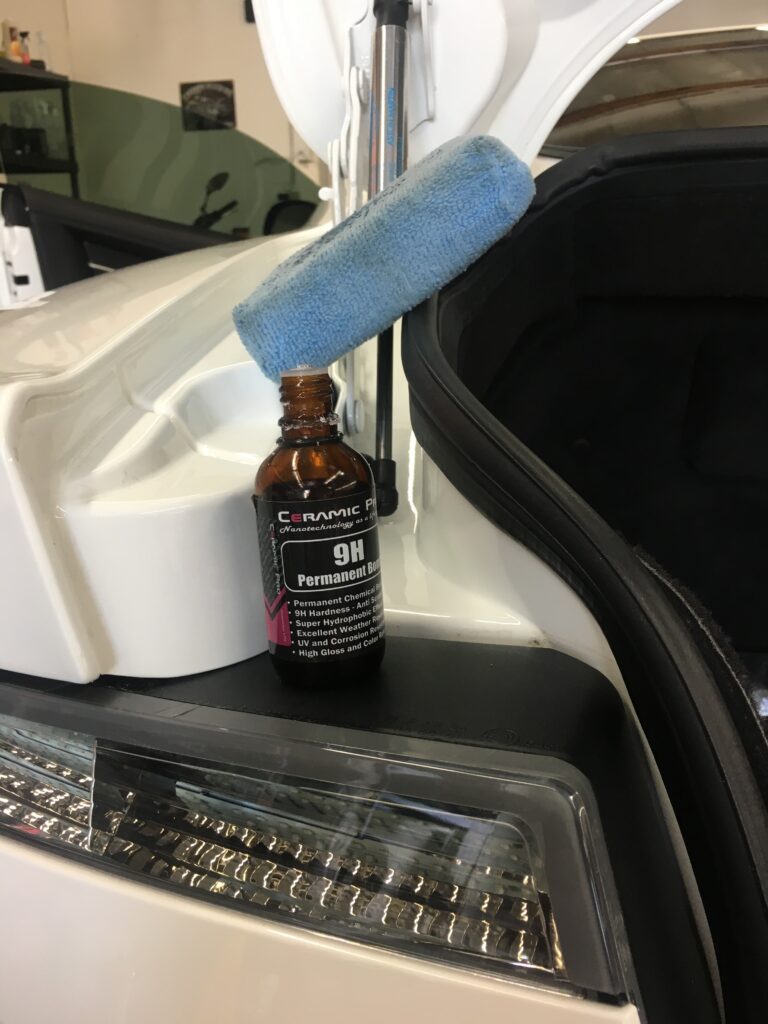
Our method of carpet cleaning is different then others, we use a dual action polisher with a brush equipped, the carpets and mats are soaked in shampoo and then we use the buffer attached brush to remove stains, and bring dirt up to the surface so we can vacuum it up after.
I use a similar method to clean leather seats using leather cleaner and a foam pad to remove the layer of the dirt or any stains in the leather.
After cleaning everything thoroughly and waiting for everything to dry, it was time to break out the carpet and leather coating from Ceramic Pro. I sprayed about 2-3 layers of Ceramic Pro Textile on the carpets and mats, rubbed it in with gloves on and left it to dry, by coating the carpet you are making it hydrophobic so if you have a spill, its considerably easier to clean up with less chance of staining.
Ceramic Pro leather provides similar effects and can negate spills as bad as ink from staining your leather. Ceramic Pro leather is applied with a microfiber applicator, it sits for a minute and is wiped off.
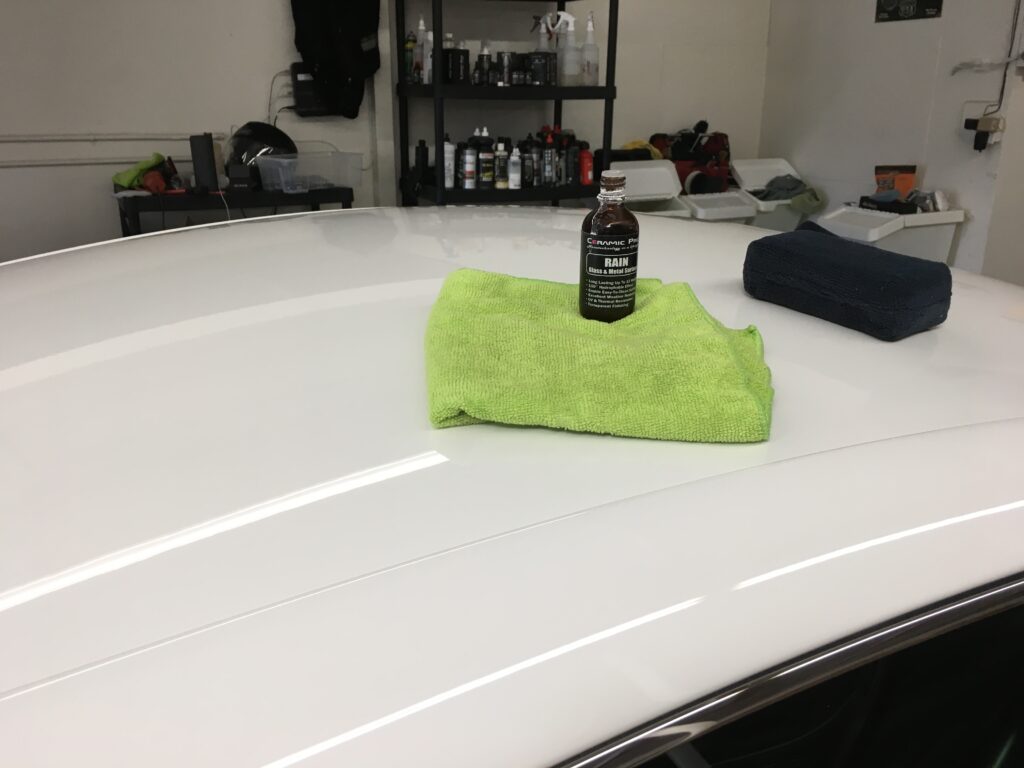
Our final step here is coating the exterior of the car, this is actually a 3 day process. Only about 5 layers a day can be applied and then there is the 8 hour wait time between coats of Ceramic Pro Light. It was a very long process with a lot of leveling and high spot removal. We go around the car with 9h 8 times over the course of 8 hours as we have a one hour wait time before applying another layer in between. The first day we put on 5 coats, the second day 3 coats, and then in the evening 2 layers of the light after its been around 7-8 hours of dryng.
After that we finish by applying Ceramic Pro rain to every window after lightly polishing the glass, and prepping with kleen strip prep all. With rain, you wipe it on, wait a few minutes, wipe it with a wet towel and then dry towel until all residue is removed and the window is clear.
